-
8 wholesale trends to stock for your store this winter

Fleek’s insights into Winter 22/23 trends / Take a look at our top, in-demand products for winter 22/23
Winter is just around the corner. As secondhand becomes first-choice, it’s just as important to know what’s trending in the world of vintage as it is in the world of fast-fashion – and don’t they feed into one another? This year, dressing means playing around with some of the key trends dominating the runways in Autumn/Winter 2022, as well as experimenting with more stylish and alt streetwear looks.
At Fleek, we’ve collected data from our customers, and their customers, on what’s selling right now and with the best margins! Read on to stay up to date with the latest trends, make the most of the season, and to ensure that your store doesn’t get left behind this Winter 22/23!
1. The North Face Nuptse
Launched in 2018, the North Face Nuptse puffer is here to stay. Celebrity wearers, designer collaborations, and streetwear loyalists have turned this item into an icon of Gorpcore. The trend doesn’t seem to be slowing down any time soon. Fashion lovers both young and old continue to seek out The North Face Nuptse at the best prices.
No vintage seller will have missed the 400% rise in North Face puffer jackets in recent years, and they continue to be one of the most searched-for vintage items across every reselling platform.
Handpick yours with Riaaj or explore the collection.
2. Hype Branded Puffers
Closely following the Nuptse, but no less deserving, are hype brand streetwear puffers. Customers are hunting for Canada Goose, Arc’teryx, Moncler, and Stone Island pieces to face the cold of winter weather and look steezy while doing it.
Offering a range of branded puffers will grab everyone’s eye, no matter what fit, color, or logo they’ve been searching for. Compete with fast fashion stores’ uniformed and reproduced responses by maintaining a range of offers for customers this winter.
Handpick with one of our wholesalers and make sure to ask for pre-authenticated pieces! While shopping designer can be risky, it really doesn’t have to. Most of our sellers are happy to pre-authenticate ahead of your handpick. Our top seller? Thrift Kings.
3. Afghan coats
This year, stores like Urban Outfitters and Asos are pushing out afghan coats in all colors and styles. But customers are not quick to forget that these coats have a long history.
Kate Hudson’s Penny Lane character has meant that the coat is popularized not just for 70s aesthetics, but Y2K looks. The coat remains playful and effortlessly stylish. What better way to respond to the trend than to offer coats that made their way through hippie fashion scenes before making its way to your customers?
4. Burberry trench
A Burberry Trench is one of those lifetime coats that everyone is always on the hunt for. This couldn’t be more true this season. Following the viral success of Matilda Djerf and ‘Scandi’ fashion, the trench coat is an essential piece of this season’s trends. The chic minimalism of a Burberry trench offers everything you need to satisfy customers on the hunt to recreate these looks.
Our top Burberry sellers: 786 Vintage Rags, S R Enterprises, Old is Gold, Retro Fashion, Bhau Enterprise.
5. Rework branded sweatshirt
More popular than ever, reworked pieces are an easy way of carrying branded pieces that offer something truly unique to customers this winter. Upcycling is super hot this winter and reworked sweatshirts offer the best way to showcase this trend.
Best of reworked:
6. Coogi & Coogi style knit jumpers
These are the OG vintage knits. These knits are a must-have in your store this season and Fleek offers the very best quality and prices.
Endorsed by Biggie Smalls, the jumper became a staple of the next generation of hip-hop artists. On the track ‘One More Chance’ he boasts ‘I stay Coogi down to the socks’.
Coogi and Coogi style bundles.
Handpick with Blackstone Vintage.
7. Long Y2K skirts
Vintage maxi skirts are in the spotlight this winter. Driven by brands such as Urban Outfitters, a long skirt is a perfect way to bring in a feminine item to the winter layers. Whether it’s woollen, denim, tartan or cargo, long skirts are in high demand. Low-waist skirts bring the y2k look, while body-hugging long skirts bring a silhouette back to winter outfits.
Winter skirts:
8. Branded fleeces
Last but not least, outdoor streetwear comes into its own during the winter months. Fleeces are not only a top-demanded vintage item, but they represent peak functionality and style. Outdoor fashion that brings hiking, camping, and climbing aesthetics to the streets has seen Gorpcore rise to one of the most desired looks. Patagonia, The North Face, Denali, and Ralph Lauren Fleeces are authenticated and bundled at great prices by Fleek.
Handpick: Thrift Kings
Bundle: Patagonia Community Picks.
If you want to get these hot items at the best quality and prices, Fleek is a safe and trusted way to source all your trendy winter pieces this season. We verify every single seller before they join the platform and you have full buyer protection with us. See How it works and take a look at our FAQs for more information. And as always, drop us a line and say hi – we check all our messages! hello@joinfleek.com
-
6 tools to boost your reselling business
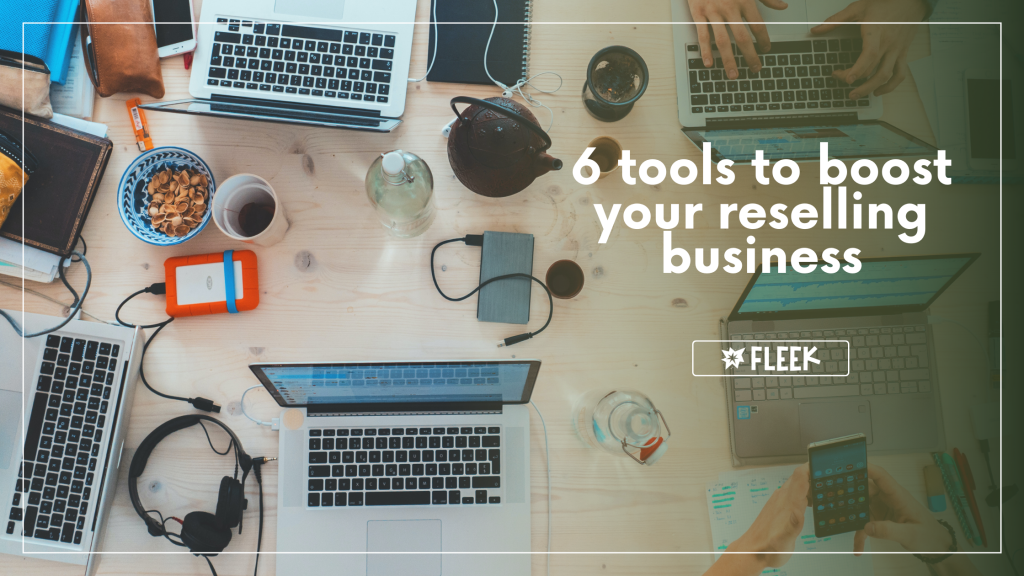
Running an online clothing reselling business can be an incredibly exciting and profitable venture in today’s virtual world, but it requires careful management and the right tools to ensure success. From taking great pictures to managing finances and effectively marketing your store, there are several essential tasks to handle. Luckily, there are plenty of tools to help you along the way. To make the most of the move to sustainable shopping, you’ll want to ensure you use the best tools available for your reselling business. In this blog post, we will explore the top six tools that you need to be successful at managing and maximizing the potential of your online reselling business.
1. Cameras and photo-editing
When it comes to selling clothes online, captivating visuals are crucial. Investing in good photography tools will allow you to showcase your garments in the best possible light and attract potential customers. Consider using a DSLR camera or a high-quality smartphone with a reliable camera app to capture sharp and well-lit images.
If you don’t have the best camera, don’t fear – there are hundreds of editing tools out there to help. We’d recommend Snapseed and VSCO to edit from the convenience of your phone, or Canva and Designify for editing on your computer. Adobe Photoshop is also great, but can take a bit of practice. Props and attractive backgrounds can enhance the overall appeal of your photos, but try to make sure they are consistent for a professional look.
Keep in mind what a buyer will want to see when shopping for clothes, and you’re well on your way. We have a whole blog post on taking the best pictures of your clothes with all our top tips in one place, so be sure to check that out for some more helpful info!
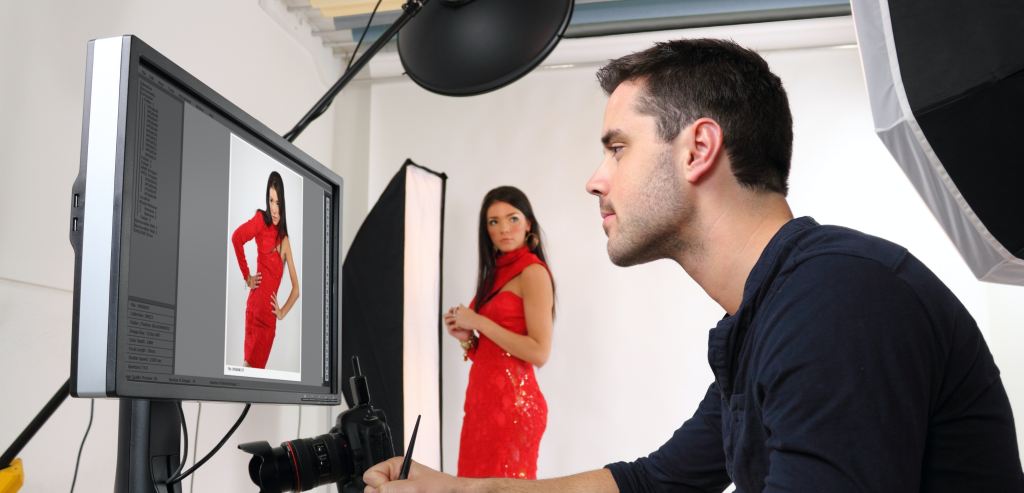
2. Managing finances
As much as we’d like to spend all day buying mountains of vintage clothing and designing funky photoshoots, keeping track of your finances is absolutely essential for any business. This might seem daunting if numbers aren’t your thing, but do not worry – there are plenty of free and easy tools to use to help you keep on top of your books. Utilizing reliable financial management software such as QuickBooks or Xero can simplify tasks such as invoicing, expense tracking, and generating reports.
These tools enable you to monitor your income and expenses efficiently, helping you make informed decisions about pricing, inventory, and profitability. They offer easy-to-follow tutorials and make managing your finances so much easier. It might seem like a lot to get your head around at first, but with the right tools and a bit of practice, you’ll be a boss in no time.

3. Responding to customers
Effective customer management is key to building long-term relationships and ensuring customer satisfaction. How you communicate with customers will vary depending on what platform you use for your store. If you’re based on a reselling app like Depop or Vinted, you’ll be communicating with the in-app messaging feature. With a website, you might have a messaging platform or stick to email comms. It can be a lot to keep track of, but CRM software, such as HubSpot or Zoho CRM, can really help you organize customer data, track interactions, and manage customer inquiries.
With a CRM tool, you can provide prompt responses to customer queries and resolve issues efficiently, improving customer loyalty and driving sales. For online clothing resale especially, you want to make the most of social media. Definitely aim for a Social CRM software that integrates your social media channels too, as this will allow you to keep track of all your communications and engagement in one place. There are loads of free resources such as courses and videos online to help you get started with CRM software, so make the most of what’s out there to help build those relationships with customers and get profits booming.
Another key benefit of using CRM software for your reselling business is the ability to maintain a centralized customer database. By storing customer information, including contact details, purchase history, and preferences, you can access valuable insights about your customers. This information can be leveraged for deciding what stock to buy, personalizing marketing campaigns, running targeted promotions, and providing exceptional customer service. All of these factors should ultimately build stronger relationships with your customers and get them coming back!
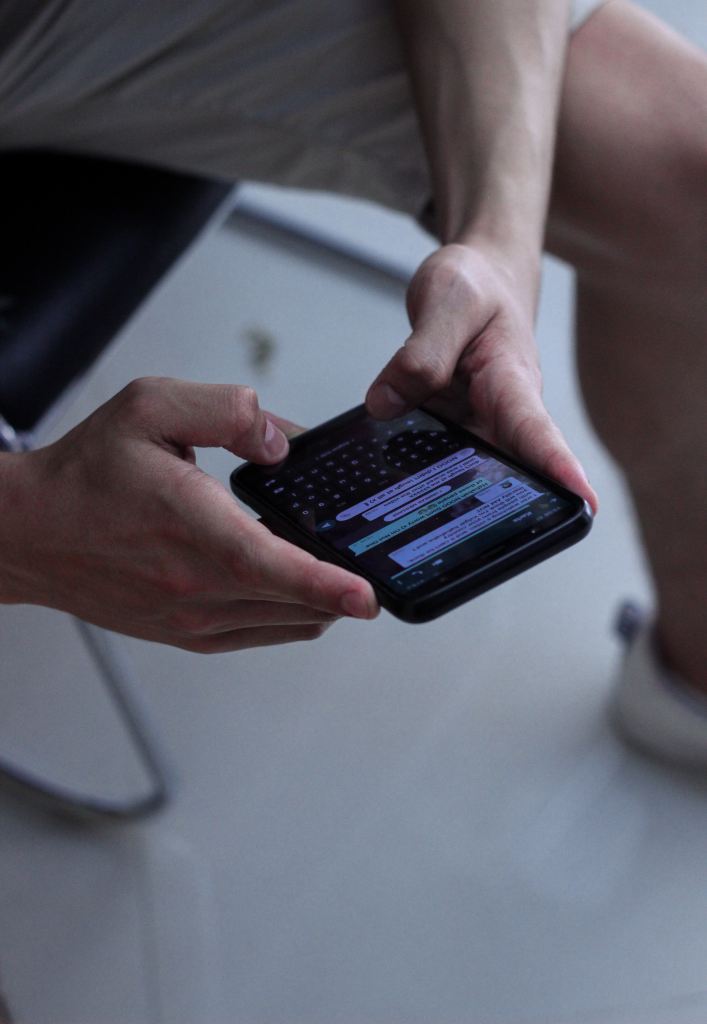
4. Marketing tips and tools
To reach a wider audience and boost sales, effective marketing is vital. Fortunately, marketing is easier now than ever by harnessing the power of social media. Using social media to your advantage is crucial for any online clothing reseller. Most of your buyers will be active social media users, so you can really make the most of this by using these platforms for your marketing, and often for free! From simply posting sneak-peeks of your latest drops to running promotions and competitions, social media has a host of great marketing tools at your fingertips.
We have blog posts on everything you need to know for marketing on Instagram and TikTok, two of the biggest platforms out there right now, but don’t forget about Facebook and Twitter either! We highly recommend using multiple platforms to increase visibility, but remember to make sure your branding is consistent across them all. This will help you look like the professional you are to potential buyers. Tools like Hootsuite, Buffer, or Later can help you manage and schedule your social media posts across multiple platforms, such as Instagram, Facebook, and Twitter. By strategically planning and automating your social media content, you can engage with your audience, increase brand awareness, and drive traffic to your online store.
You can also make marketing easier for yourself by using marketing automation platforms like Mailchimp, Klaviyo, or HubSpot Marketing Hub, which allow you to automate email campaigns, segment your customer base, and personalize your communications. Use these platforms to send targeted promotions, discounts, and product updates to specific customer segments, which will increase engagement without having to do the maths yourself and manually contact buyers! Trust us – this will save you a lot of precious shopping time.

5. Shipping and delivering products
Efficient and reliable shipping and delivery services are critical for an online clothing reselling business. Delivery is one of the key topics in reviews for online clothing stores, so you’ll want to get this one right! It’s important that you send your items out well-packed so pieces arrive safely, and promptly so buyers don’t get impatient. This can be made easier by using shipping platforms like ShipStation or Shippo that integrate with multiple carriers and offer features like label printing, order tracking, and automated notifications. These tools can help streamline your shipping process, saving you time and ensuring a smooth customer experience. Shipping multiple sales daily can be a lot to keep on top of, so using shipping tools will make things easier for you when business is booming!
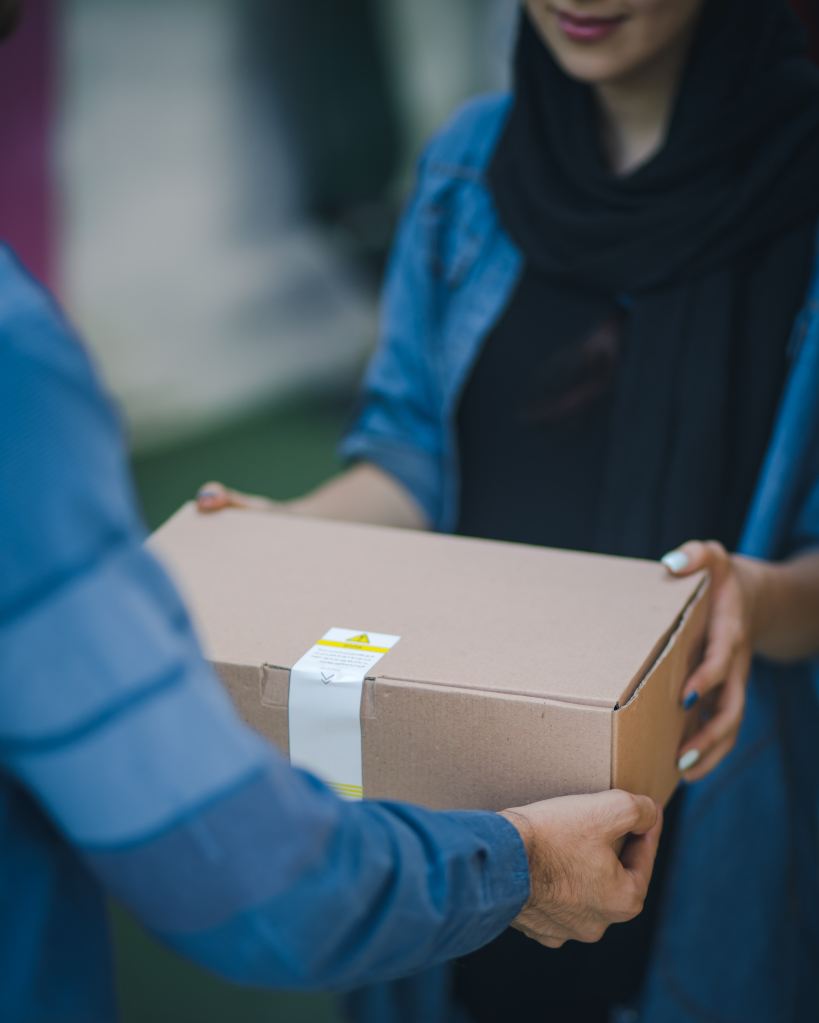
6. Reliable sources for your clothing
Even with the best photos and marketing in the world, you need great pieces to start with. Finding the best secondhand and vintage pieces for your business can be hard, especially when buying in bulk. Bulk-buying can really help to keep your finances down, and with Fleek this has never been easier. Using a reliable wholesaler to source your clothing can help you find the best pieces for less and make good contacts in the industry. You can find hundreds of verified sellers on our website and app, and it couldn’t be easier to find what you’re looking for with our easy search bar and virtual handpicks to get exactly what you need in a bundle while still keeping costs down. You’ll also have peace of mind with Fleek’s buyer protection policy that protects you on every purchase. With everything you need in one place, Fleek can make sourcing amazing items for your reselling business simple.

Running a successful online clothing resale business requires a combination of effective management, excellent customer service, and strategic marketing. This can be made easy by leveraging the right tools to streamline your operations, enhance customer experiences, and boost sales. Investing in the tools we’ve mentioned above, as well as finding a reliable wholesaler, can make a huge difference in your business’s growth and profitability and will make managing your business so much easier. Don’t forget to check out our blog for more helpful tips to boost your online reselling business, or just drop us a message at hello@joinfleek.com.
-
8 fashion trends for your store this summer
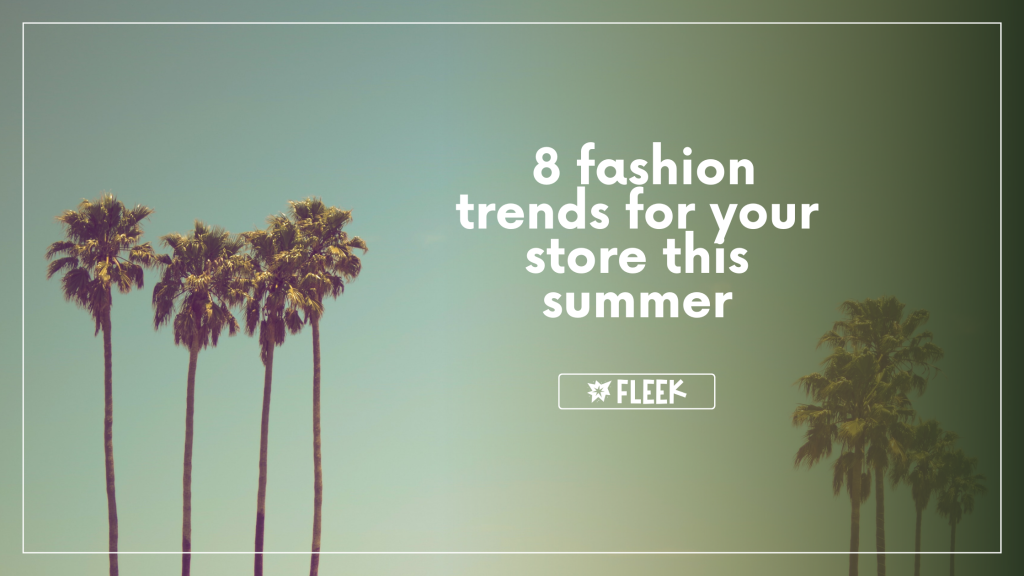
As the temperature rises, so does our excitement for the latest summer fashion trends. Each season brings a fresh wave of styles and influences which your buyers will want to follow. Summer 2023 is here, so get ready to refresh your stock and incorporate these hot trends into your social media content. Luckily for you, here at Fleek, we’ve done the research so you don’t have to. From nostalgic nods to the ’90s to contemporary takes on classic pieces, read on for the top eight fashion trends you need to know for the summer of 2023.
1. Quiet luxury
You can thank Sofia Richie-Grainge and her TikTok trending wedding for the chic summer style everyone is going crazy for this year. Subtle and refined, the quiet luxury trend embodies understated elegance. It’s all about investing in timeless, high-quality pieces that exude sophistication. Vintage and secondhand stores are perfect for finding these gems, so curate some pieces for social media posts that will have your buyers feeling luxe for less this summer. Opt for clean linens, structured handbags, and classic silhouettes. Neutral tones such as beige, ivory, and soft pastels dominate this trend, allowing you to create effortlessly chic outfits. Perfect for both daytime and evening events, quiet luxury is the epitome of refined summer fashion and works for every occasion.
Polish your look with these perfect Polo Ralph Lauren shirts.

2. Athleisure
On the other end of the spectrum, athleisure continues to dominate the fashion scene, blurring the lines between sportswear and everyday wear. This trend combines comfort and style effortlessly, which is what we all need in the summer heat. Embrace matching sets, oversized sweaters, and retro sneakers to nail the athleisure aesthetic. Keep your hair out of your face with sports headbands, a refreshed nod to the balletcore style we saw last season. Paul Mescal is rocking vintage men’s sports shorts this summer, so your buyers will no doubt be doing the same – show off your collection on social media. Whether heading to the gym or meeting friends for an al fresco brunch, athleisure is the perfect choice for a trendy and comfortable summer look.
Handpick your vintage sportswear bundles with Fleming Vintage.

3. ‘90s grunge
Nostalgia takes center stage with the revival of ’90s grunge fashion. Embrace the rebellious spirit of this era with oversized flannel shirts, ripped denim, and band tees. Even chunky leather combat boots can stay cool when paired with a flowy summer dress or shorts. Don’t miss out on the buyers who will flock to vintage and secondhand stores to find these classic pieces. Play with layering, experiment with graphic tees, and incorporate the effortlessly cool aesthetic of the ’90s in your social media posts for an edgy summer look that buyers will be all over.
Stock up on flannels with this awesome awesome bundle.

4. Low waist jeans
After a long hiatus, low waist jeans are making a comeback this summer. These hip-hugging denims add a touch of casual cool to any outfit. Pair them with crop tops for a cute Y2K look or an oversized shirt for that cool-girl style. Whether you prefer a distressed look for the 90s grunge style trending this summer or bell-bottomed flares for the 70s boho vibe, low waist jeans will be your go-to choice for a laid-back yet stylish summer aesthetic.
Check out Thrift Kings for all your vintage denim needs.
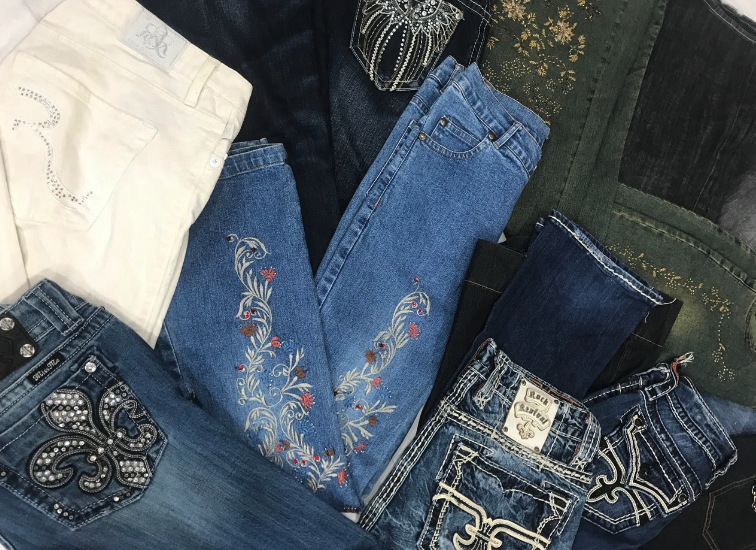
5. Bermuda shorts
Can’t handle jeans in the summer heat? We get it. But say goodbye to daisy dukes and hello to Bermuda shorts for your 2023 summer wardrobe. These knee-length shorts are a versatile and trendy alternative to your standard denim shorts. Bermuda shorts aren’t just for dads: opt for tailored versions in neutral shades like beige and white for a luxurious look, or cargo-style khakis with on-trend utilitarian-style pockets. Or just embrace some classic denim ‘jorts’ for that ‘90s dad style that will go perfectly with your fresh New Balances this season.
Searching for the perfect Bermudas? Look no further than these timeless Carhartts.
6. Sheer
Light, airy, and ethereal sheer fabrics bring a touch of romance to your summer wardrobe while keeping you cool. Delicate materials like chiffon and organza add a romantic flair to any outfit and have you living your Italian summer dream without even stepping on an airplane. Experiment with sheer blouses, skirts, or dresses to achieve a breezy and whimsical look. Layering is key when incorporating sheer fabrics into your ensemble, so consider pairing your pieces with opaque undergarments in contrasting textures like lace for a stylish and contemporary outfit. Underwear as outerwear is big this season, so don’t forget the ‘coquette’ negligees and sheer corsets forever trending on TikTok. If that’s not your thing, sheer is a flexible style, and can be turned grungy with a simple black mesh maxi skirt and ‘90s combat boots.
Check out this gorgeous sheer lingerie drop.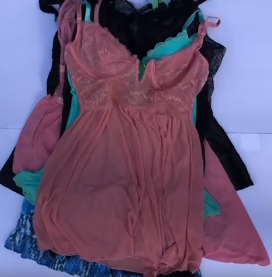
7. Cobalt blue
This season’s color trend is all about making a bold statement, and cobalt blue is the shade to watch out for. Bringing a bit of Santorini to the runways to high-street stores, cobalt blue is everywhere you look. Vibrant and captivating, this hue adds a refreshing burst of color to any outfit. Whether as a bright dress or shirt, or simply in accessories, this shade of blue needs to be stocked in your store this summer. This rich color pairs well with neutrals, metallics, and even other bright shades to create a stunning summer look, so it’s versatile and can work with any aesthetic. Get creative on your social media to let your buyers know they don’t need to run away to Greece for their Mamma Mia fantasy this summer – your store can bring it to them.
Beat the sun with blue bucket hats.
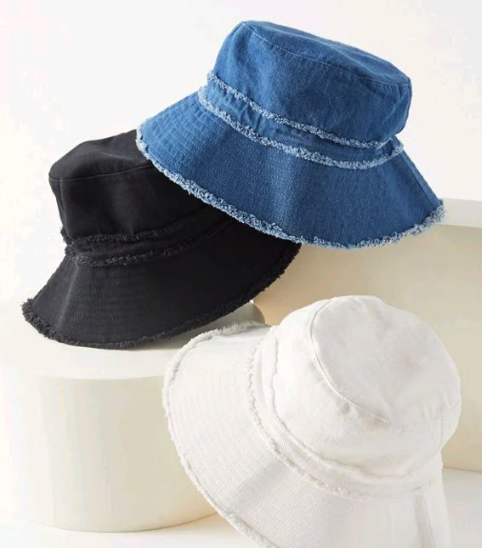
8. Mermaidcore
Channel your inner sea siren with the enchanting trend of mermaidcore. Made popular by the release of the new The Little Mermaid movie, this playful style draws inspiration from the mystical world of mermaids and oceanic elements – PERFECT for a summer by the sea. Embrace iridescent fabrics and seashell accessories to create a magical summer ensemble for festivals or beach days. Opt for flowing maxi dresses, shimmering skirts, and pastel hues to fully embody the mermaidcore trend and make a splash wherever you go.
Shimmer at festivals this summer with sequined tops from ItsPreloved.
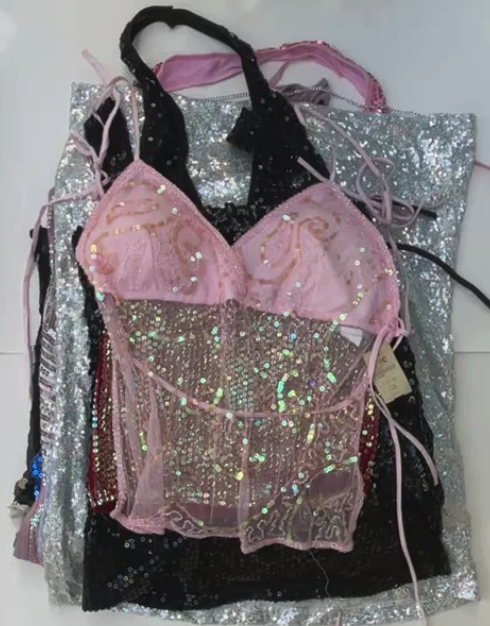
Summer 2023 brings a huge range of fashion trends, from nostalgic nods to the ’90s to ethereal styles inspired by the ocean. Whether you prefer low waist jeans or Bermuda shorts; athleisure or quiet luxury; ’90s grunge or mermaidcore, there’s something for everyone to embrace their individuality and make a statement this season. Have fun experimenting with these trends on your social media, and let your personal style shine to let buyers know you’re the perfect place for their summer wardrobe.
If you want to stock these items at the best quality and prices, Fleek is a safe and trusted way to source all your hot summer pieces this season. We verify every seller before they join the platform and you have full buyer protection with us. See How it works and take a look at our FAQs for more information or just drop us a line and say hi at hello@joinfleek.com.
-
7 tips for taking pictures of clothes to sell online

In today’s digital world, selling clothes online has become an incredibly popular way to make money. Whether you’re an established vintage clothes store that’s making the move online, or just starting up reselling awesome second-hand pieces, one thing is for sure – you’ll need good pictures. While selling clothes online can be a lucrative way to reach more people than a physical store ever could, taking the best pictures of your clothes is crucial to attract potential buyers. In this blog post, we will share some tips on how to take the best pictures of your clothes to sell online and get those buyers snapping them up.
1. Make sure your items look good
Second-hand and vintage clothes might need a bit of TLC before you post pictures of them online. We recommend getting new purchases cleaned and steamed to get rid of any marks and smooth any wrinkles out, and remember to fix any missing buttons or loose threads before taking photos. You want your items to look their best for potential buyers, but be honest about their condition. Vintage finds can be well-loved, which adds to their charm. Don’t try and hide this from buyers, as you’ll run the risk of a refund or bad reviews online.
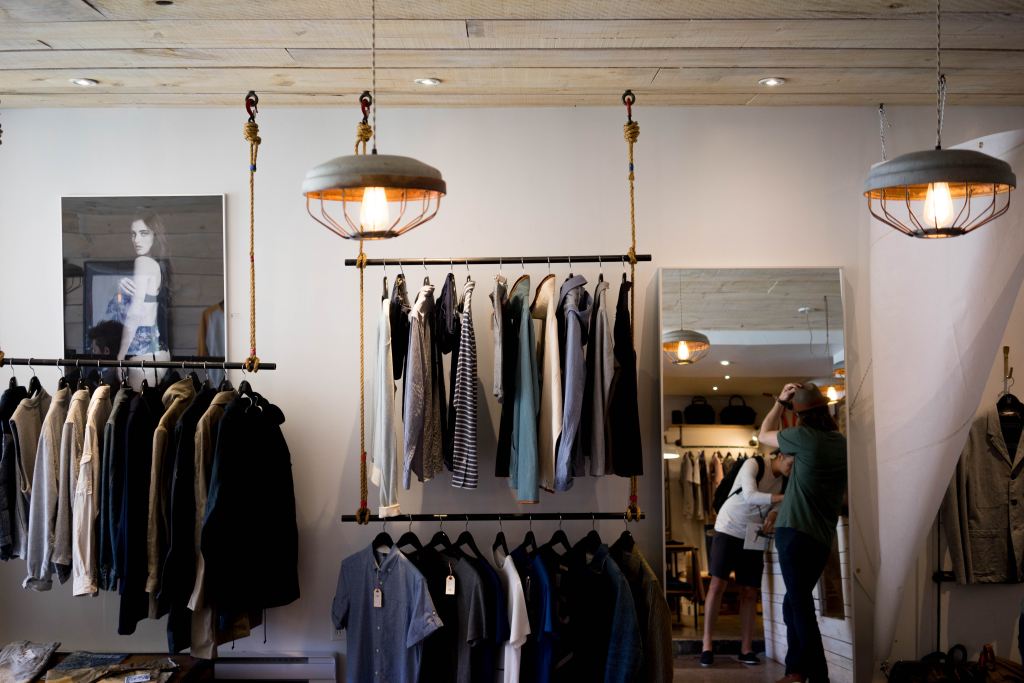
2. Choose your camera
A good camera can make or break a photoshoot, no matter how great your clothes are. The quality of the images you take is critical when it comes to selling clothes online, and using a high-quality camera or smartphone can make a significant difference to the final result. If you have a good quality camera, definitely use it to take pictures of your clothes, but a recent smartphone with a high MP camera can also do the job perfectly well. Smartphones have the benefit of built-in editing tools, as well as a range of apps you can download to edit. We’ll talk about editing later, but don’t fear if you don’t have a top quality camera to shoot your clothes, as smartphones can be just as effective and potentially more convenient for your business. Taking pictures on your smartphone also makes it incredibly easy to share new pieces on social media, which can be an amazing free marketing tool (check out our blog on using Instagram for your relling business for some more tips on this).

3. Find the right background
When taking pictures of your clothes, it’s important to choose the right background. A clean and simple background such as a plain wall or a white sheet will make your clothes stand out, but this isn’t to say you can’t get creative. If funky sets are more your thing and work for your target audience, go for it! The one thing we’d recommend is consistency. This will make your photos look professional and can even market your brand as recognisable. While we’d avoid busy backgrounds that might distract buyers from the item you are selling, adding a little something that shows buyers your unique brand won’t hurt, and may even create a recognisable brand image.

4. Pick your shooting style
There are a few different photography styles you can use to shoot your clothes, so we’ll talk you through them to help choose the best option for your business.
- Models
Using a model can be a great idea, as this will give buyers a better idea of how the clothes fit and look when worn. This can help people actually visualize what the clothes will look like on them, which might lead to more sales. You don’t even have to hire a model, as you can always wear the clothes yourself or ask a willing friend to model them for you. We wouldn’t recommend using a mannequin unless it’s a fragile vintage piece, as this can seem a bit out-dated and is harder to imagine as a real person – we all know mannequins don’t have the most realistic sizings!
- Flatlay
Flatlay is probably the easiest and most convenient way to shoot your clothes – simply lay your clothes down on a flat surface and take a picture from a right angle above. Most people have a white bedsheet lying around, and if it’s on your bed already, you’re in luck. As long as it’s clean and crease-free, you’ve already got the perfect background for your photos. You can even get creative by laying out outfits or bringing in props and accessories that tie the look together. The options are limitless with this quick and easy style you can achieve from home.
- Hanging
Another simple option is hanging your item up on a clothes hanger against a plain, clean wall. Requiring just a nail and great lighting, this style is easily achieved, and works especially well for longer items like dresses. On a clothes hanger, you can capture the flow of a skirt better than you can with it lying down. We’d recommend ensuring the clothes are hung straight on the hanger, so they aren’t wonky or trailing down, as this can look unprofessional and unappealing to a buyer.

5. Choose your lighting
Lighting is incredibly important for showing off your clothes as the gems they are. Dull and dark lighting can obscure some of your items’ best features, so make sure you pick a method that is bright and works for you. There are two options here that will depend on your budget and space, but both can work really well. Let us talk you through it.
First, we have natural lighting. Natural lighting is just daylight, which, of course, is free. It also looks authentic and avoids that sterile or overbearing feel you can get from harsh studio lights. The major issue with using natural lighting is that it changes over the course of the day, which is a problem when you’re looking for consistent photos that show your professionalism as a brand, and can also limit the amount of time per day you can dedicate to photography. You can control it to some extent by using a reflector, but it really comes down to whatever the sun decides to do that day. Depending on where you are in the world, this might not be the most reliable lighting source.
Your other option is staged or studio lighting. This can be an extra cost, but good quality lighting equipment will last you a long time and also give you more time throughout the day to shoot your clothes. The best part is that you can control studio lighting and therefore ensure your shoots remain professional and consistent.
Both options can work well, so pick the lighting style that’s right for you. However, we would advise not mixing the two – remember, consistency is always your aim with photographing your clothes.
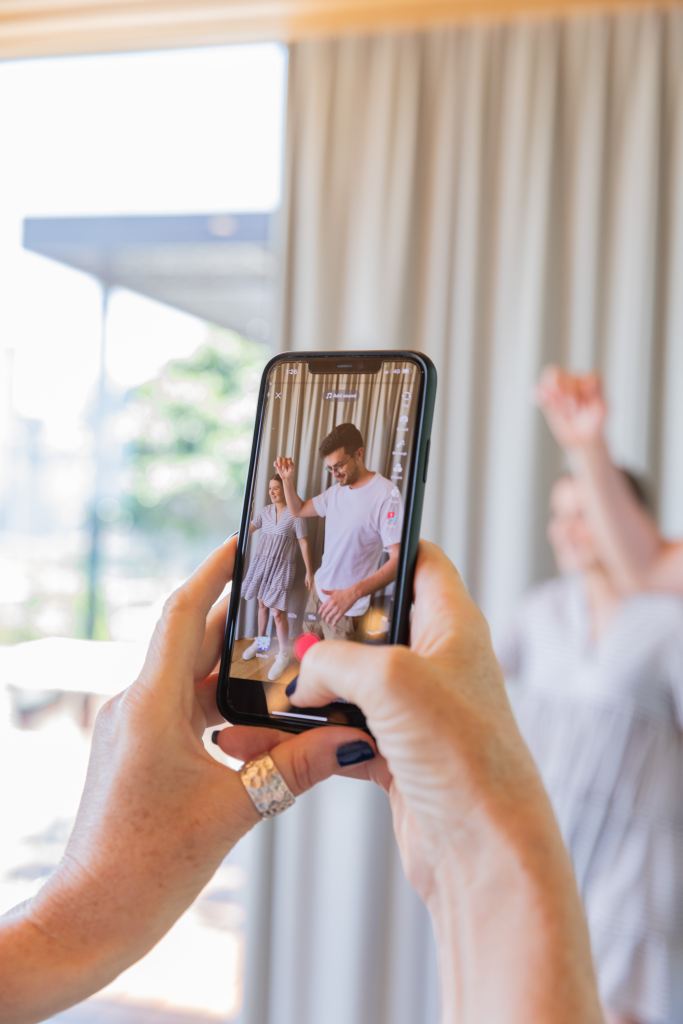
6. Take multiple shots from different angles
Lighting is incredibly important for showing off your clothes as the gems they are. Dull and dark lighting can obscure some of your items’ best features, so make sure you pick a method that is bright and works for you. There are two options here that will depend on your budget and space, but both can work really well. Let us talk you through it.
First, we have natural lighting. Natural lighting is just daylight, which, of course, is free. It also looks authentic and avoids that sterile or overbearing feel you can get from harsh studio lights. The major issue with using natural lighting is that it changes over the course of the day, which is a problem when you’re looking for consistent photos that show your professionalism as a brand, and can also limit the amount of time per day you can dedicate to photography. You can control it to some extent by using a reflector, but it really comes down to whatever the sun decides to do that day. Depending on where you are in the world, this might not be the most reliable lighting source.
Your other option is staged or studio lighting. This can be an extra cost, but good quality lighting equipment will last you a long time and also give you more time throughout the day to shoot your clothes. The best part is that you can control studio lighting and therefore ensure your shoots remain professional and consistent.
Both options can work well, so pick the lighting style that’s right for you. However, we would advise not mixing the two – remember, consistency is always your aim with photographing your clothes.

7. Edit your pictures
After taking your pictures, it’s a good idea to edit them to enhance the colors and make them look more professional. Smartphone cameras have built-in editing tools, but also offer a plethora of apps like Snapseed and VSCO to help you make your images look their best. There are many photo editing tools available online that you can use to crop, adjust, and color correct your pictures if you’d rather edit from a computer screen. We’d recommend Canva and Designify, or even Adobe Photoshop if you’re experienced in editing and looking for the next step to showcase your items. You only want to edit to show off and augment your items, not change them all together. Don’t edit out any flaws, and keep your items looking realistic, as you don’t want any disappointed buyers.
In conclusion, taking high-quality pictures of your clothes is essential for selling them online and attracting buyers to your business. By following this guide, you can ensure that your pictures look professional and appealing to buyers. Remember to think like a buyer rather than a seller, and imagine what you would want to see online when visualizing clothes on you. Get some inspiration by visiting our website and browse what our trusted wholesalers are doing to show off their items. Good luck, and get snapping!
-
How to use TikTok for your reselling business
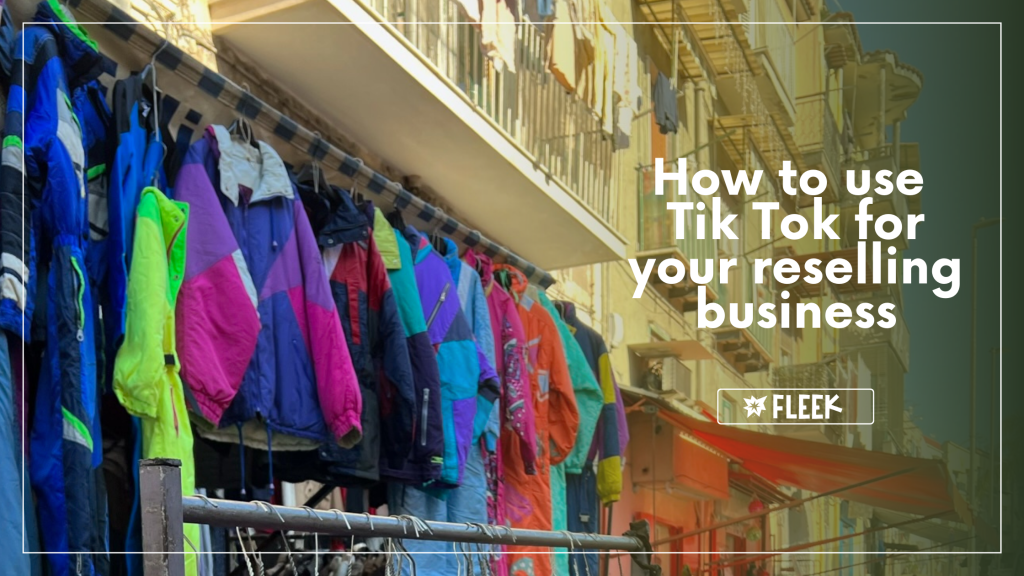
TikTok is a game changer for marketing your online reselling business. Since the pandemic, TikTok has boomed in popularity, now boasting more than 1 billion monthly active users. What started as a platform for Gen Z dance routines and challenges has now grown to a marketing tool for all kinds of businesses, from small independent creators to major fashion houses like Burberry and Dior. Jacquemus recently garnered 1.4 million likes on a TikTok video alone of giant models of their Bambino bags cruising the streets of Paris, causing a sharp rise in searches of their brand and sales of the bag. Ingenious. While you may not be able to commission a fleet of bus-sized vintage sweaters just yet, you can still use TikTok to promote your secondhand and vintage clothing business. But if you don’t know your #fyp from your #tiktokshop, here at Fleek we’ve put together a guide on how to use TikTok to promote your online reselling business and showcase your products to the world. Trust us, you’ll want to know.
1. Set up a TikTok Pro account
If you haven’t already made a TikTok account, it should be number 1 on your To Do list. TikTok can make a huge difference to your business, especially if you do it right. Your videos simply popping up on someone’s ‘For You Page’ (aka FYP) could bring in a whole host of new buyers if you play the right marketing strategies. The FYP is the main feed of TikTok, where viewers find videos algorithmically curated towards their personal interests and what’s globally trending. If you have a TikTok account already, make sure it’s set to Pro. You’ll then be able to add a link in your bio to your website or online storefront, as well as contact details and other social media accounts, so when viewers see your TikTok videos pop up on their FYP, they can quickly find your details just by clicking on your profile. Your videos can also be improved by accessing analytics info, which you can only do with a Pro account. Using analytics will help you market your brand better, as you’ll know what videos are working best and what engages viewers while scrolling their FYP. For more details on how to actually create these videos which will promote your business and make your posts pop, read on.
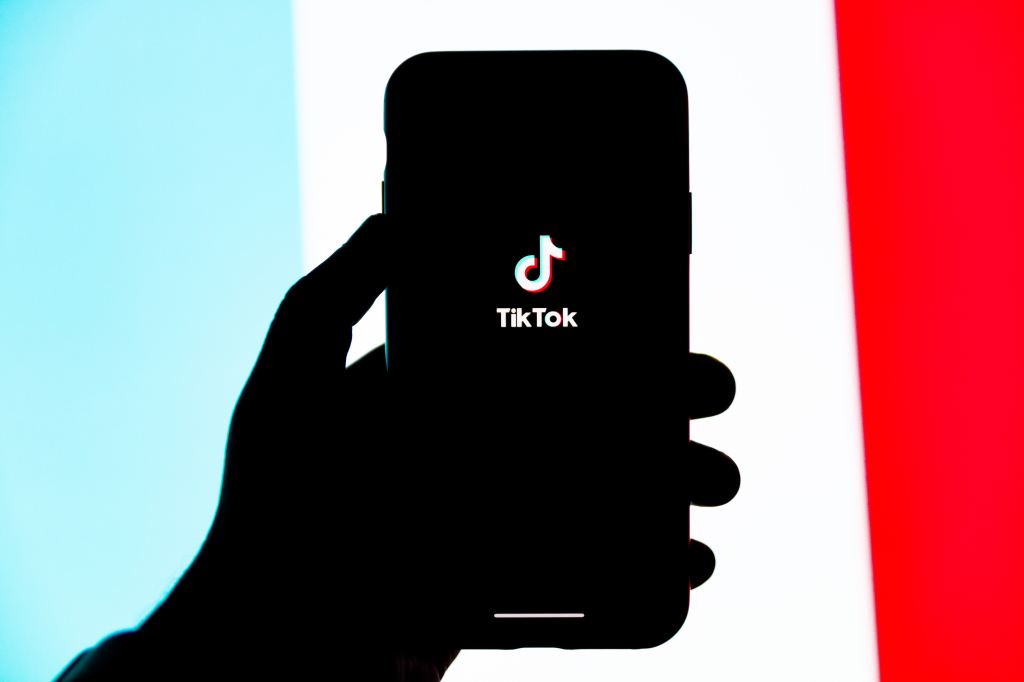
2. Get TikToking
The key to success on TikTok is to create engaging content that resonates with your target audience. This will depend on your business’ niche, but be aware that over 70% of TikTok’ers fall between the ages of 18-34. As the secondhand clothing demographic is a predominantly younger one, TikTok is ideal for many online resellers. Don’t fear if not, as TikTok is ever-growing but also not the only option out there (check out our Instagram marketing guide if that’s more your thing).
TikTok is a platform where creativity reigns supreme. Creating entertaining content that plays to the interests of your target market is essential to build a strong following on the platform. Make videos that showcase your products or services, show behind-the-scenes footage, or offer tips and advice. Product drops are a great way of showing potential buyers the type of stock you offer and giving your TikTok audience a sneak peek of your next big drop. The more engaging your content is, the more likely people will follow your account and become potential customers.
Your content should be visually appealing and showcase your brand’s personality while most importantly capitalizing on current trends, as this is what really engages TikTok audiences and its algorithm. Use trending music, challenges and hashtags to increase the discoverability of your content. You don’t need a big budget or large amounts of time, as TikToks are only short videos that need to immediately grab viewers’ attention. It might seem counterintuitive, but with TikTok, the focus is really quantity rather than quality, as long as each video contains something that will hook viewers and draw them to your page. The more videos you produce, the more chances you’ll end up on a FYP and create a trending video. Who knows, with the right marketing strategy, you might even go viral. Next, we’ve got a few tips on how to make this happen.

3. Go viral!
We’ve already covered how important following the latest trends is to gain traction on TikTok. This requires a bit of research and, crucially, keeping up-to-date. TikTok is a fast-moving platform, and nothing stays trending for long. Hashtags are an essential part of managing your TikTok marketing, as they help users discover new content. Do some research on relevant hashtags to your niche or industry, and also what hashtags are trending at the time of posting. Include these hashtags in your video captions to help your content appear in front of potential customers, both those who are interested in what you offer and those who happen to see it pop up on their FYP. You can increase the chances of this by using the hashtag #fyp in your captions to get your TikToks appearing on the FYPs of users all across the world. Be careful not to use too many hashtags though, as this can make your content look like spam.
Using popular hashtags as well as trending topics can help you go viral. If a challenge is going viral, make the most of it and find a way to incorporate your products into the trend. Is there a particular sound trending? Use it as the background music of your product drops and GRWMs. TikTok is all about capitalizing on the latest trends to use the algorithm to your advantage and attract as many potential buyers as possible.
Influencers are MAJOR on TikTok and can provide a powerful marketing tool for your business to reach a wider audience. Collaborate with influencers who have a large following in your niche and ask them to feature your products or services in their videos. This may be simply wearing your items and tagging your store to offering exclusive discounts on your TikTok Shop. Leveraging influencer content means you can tap into their audience, who are already interested in what you offer, and draw them to your page and store. TikTok makes this easy by offering an Influencer Marketplace, where popular influencers advertise their services in an easy-to-use marketplace. #TikTokMadeMeBuyIt is a very real thing, and influencers can help your store reach the top of this hashtag.
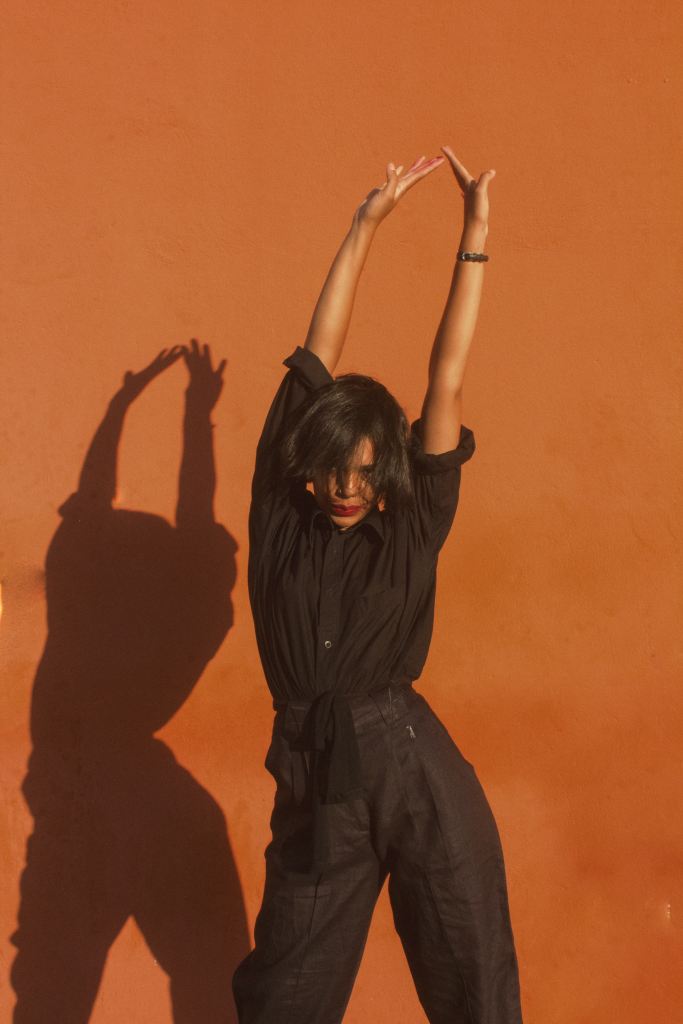
4. TikTok Shop
TikTok has also introduced their own in-app e-commerce feature, TikTok Shop, which makes it even easier for you to use TikTok to promote your online reselling business. Set up a TikTok Shop account by tapping on the three dots in the right hand corner of your profile page and follow the on-screen instructions to create your account. Provide some basic info and add products to your store, including details about your product. Make sure to use the high-quality photos you’d use on other social media apps or your own storefront to showcase your amazing products in the best light. You can then promote these products using TikTok videos that capitalize on the latest trends and hashtagging your items to interested buyers. You can also work with influencers to tag your products in videos that feature them wearing your items or showing off a haul, and even offer exclusive discounts that their followers can use in your TikTok Shop.

5. Promote your TikTok and use resource center
TikTok has an advertising platform that allows businesses to promote their products and services. Use this platform to target specific audiences based on demographics, interests, and behaviors. This will help you reach potential customers who are most likely to be interested in your products or services. While TikTok does have an accessible ad service, TikTok users don’t respond as well to traditional advertising. In fact, as soon as they spot an ad, they may just immediately skip before even looking at the product. Get creative instead by following our tips above to create videos that capitalize on the latest trends and bring you views without even having to pay.

Remember, TikTok is a creative platform, so be sure to have fun with your content and showcase your brand’s personality. Utilize hashtags, trending topics and sounds to get your videos viral and your business on FYPs all over the world. Don’t forget to give us a follow at @joinfleek to join the community and get some inspo!
-
8 best websites and apps to sell clothes online

The world of retail has changed dramatically over the past few years, with online shopping now an easy way for buyers to find exactly what they need from the comfort of their home. The rise of e-commerce combined with the recent move towards eco-conscious shopping has seen a boom in online reselling businesses, where buyers can find stylish, quality clothing without relying on fast fashion. With the ability to reach a vast audience across the world at the tap of a button, starting an online reselling business can be a lucrative venture that combines your love of fashion with a popular and sustainable form of retail. However, choosing the right platform for your business is crucial to its success. We know this decision can be a hard one to make, as there are so many options out there with different pros and cons. But do not fear, we at Fleek are here to help! Whether you are just starting up selling secondhand clothing online or looking to boost your business, read on to find out what we think are some of the best platforms for your online reselling business.
1. eBay
Pros
eBay is one of the oldest and most established online marketplaces, making it an ideal platform to start your reselling business. With over 185 million active users worldwide, eBay provides a truly enormous audience for your store. You don’t need to be an expert in technology either to list your items on eBay, as it has an easy and intuitive interface to start selling your products online. Even better, it also offers a range of seller tools to help you manage your listings effectively. You can sell through auctions or fixed-price sales, which can attract buyers, and set your own shipping policies. eBay’s robust feedback system allows buyers to rate sellers and vice versa, which can help build trust with your buyers and improve sales over time.Cons
eBay charges fees for every sale, including listing fees, final value fees, and PayPal fees. These fees can add up quickly, and may eat into your profits. With more than 18 million sellers across the world, eBay is a highly competitive marketplace, and there may be many other stores offering similar products to yours. This can make it difficult to stand out and attract customers, especially with the lack of personalisation available on eBay storefronts. eBay may also hold payments for up to 21 days, which can be frustrating for sellers who need cash flow to fund their businesses, which may particularly be the case if you are just starting out reselling clothes.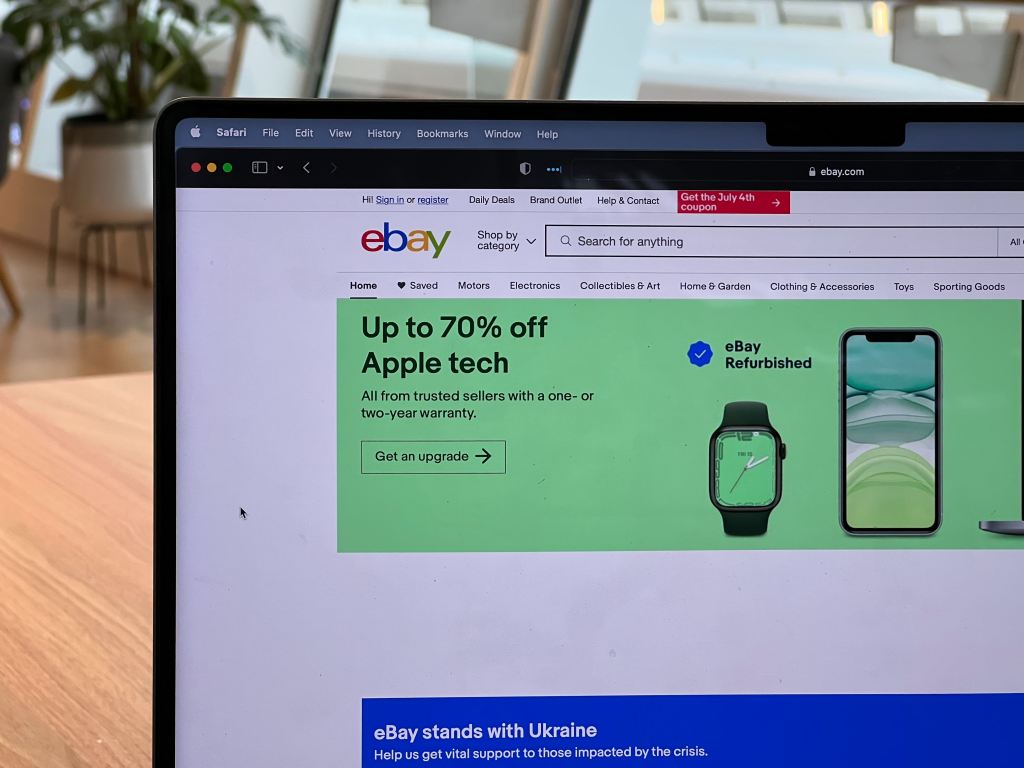
2. Poshmark
Pros
Poshmark is an online marketplace that focuses on fashion, making it a perfect platform for reselling vintage and secondhand clothing. Poshmark uniquely offers a social aspect, allowing you to connect with other sellers and your buyers, which can be beneficial for making industry connections and building trust. They also offer a range of seller tools, including shipping labels, packaging materials and free authentication, making it easy to manage your listings and prove your reliability as a clothing seller. Poshmark also has a large user base of over 80 million people, which means there is a higher likelihood of your items being seen by potential buyers than some other platforms, and is also more targeted towards buyers looking for secondhand and vintage clothing. Their website is user-friendly and easy to navigate, making it simple to sell your goods. One key bonus of Poshmark is that it offers built-in shipping, which means you won’t have to worry about calculating shipping costs or arranging shipping!Cons
Poshmark takes a 20% commission on sales, which is significantly higher than other selling platforms. It also has limited negotiation options, as sellers are only able to offer discounts through the “Offer” feature, and buyers cannot submit their own offers. Combined with their pricing guidelines sellers must follow, this can limit your ability to set your own prices according to the needs of your business. Their shipping can sometimes be slow, which can result in longer wait times for buyers to receive their items and may affect your feedback as a growing business. Poshmark is currently only available in 5 countries: the US, Canada, Australia, India and the UK. While very popular in the States, exclusively using Poshmark may limit your potential customer base if you are looking to expand, or are simply based outside of this remit.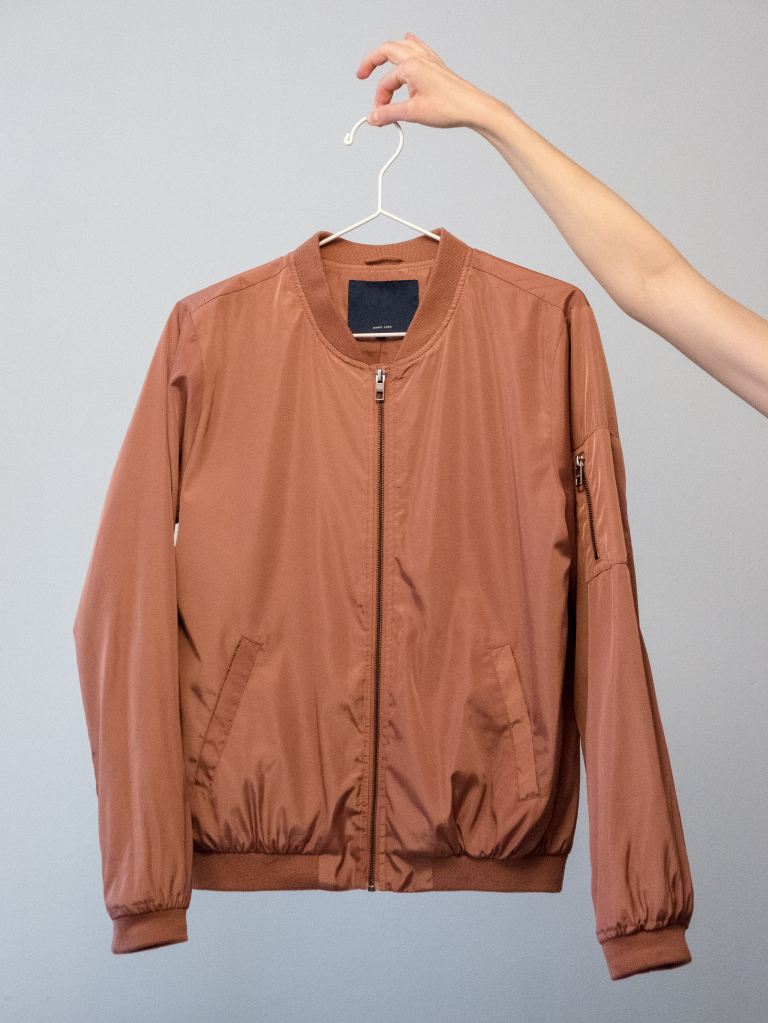
3. ASOS Marketplace
Pros
ASOS Marketplace has a global reach, which means that you’ll have the potential to reach a large audience of buyers. Compared to other online marketplaces, ASOS Marketplace also charges relatively low fees for sellers, making it an attractive option to avoid high overhead costs. ASOS Marketplace is easy to use and offers a range of tools and resources to help you optimize listings and boost sales. ASOS is a well-known and respected brand in the fashion retail industry, which can help to build trust and credibility, especially for sellers who are new to the online marketplace or just setting up your business.Cons
Although ASOS Marketplace is a reputable platform for selling secondhand clothing, there is a lot of competition among sellers, which can make it difficult for new sellers to gain visibility and attract customers. As a globally trusted business, they also have strict guidelines for the quality and condition of items that can be sold on the platform, which can be a challenge if you have some well-loved but sought after items to sell. ASOS Marketplace is responsible for handling customer service issues related to sales made through the platform; while this can be convenient, it can also be challenging to manage customer complaints without direct control over the process.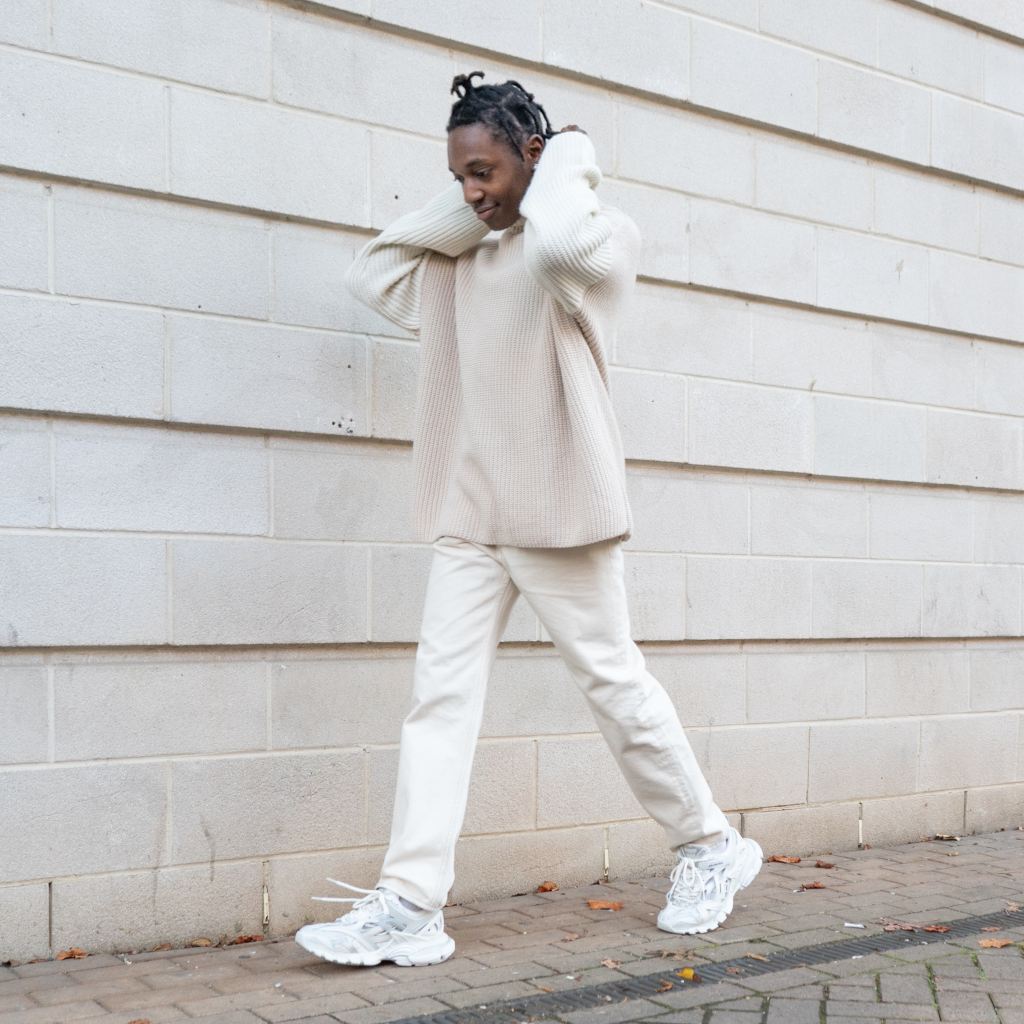
4. Depop
Pros
With its drive towards sustainable fashion and super easy app, it’s plain to see why Depop has over 30 million registered users. Their large and active community of buyers and online popularity makes it an ideal way to sell your stock to a vast range of shoppers, particularly young social media users who may be your target audience. Depop’s app is user-friendly and easy to navigate, so it’s simple to quickly list new items for sale. The buying process is also straightforward through PayPal, with the bonus of seller protection and immediate access to funds. You are in control of how you ship your items, which can even be altered per item, allowing you to customize the shipping of your vintage lace camis to North Face nuptses in order to maximize profit.Cons
Depop charges a 10% fee on all sales, which is higher than some other e-commerce platforms. While Depop being a popular platform can draw millions of people to your store, there is a lot of competition among sellers. It can be challenging to stand out and make sales, especially if you’re just starting. Although this can be helped by marketing and social media, it might take awhile before sales start booming. Depop also has limited payment options, as it only accepts payment through PayPal, which may not be convenient for everyone.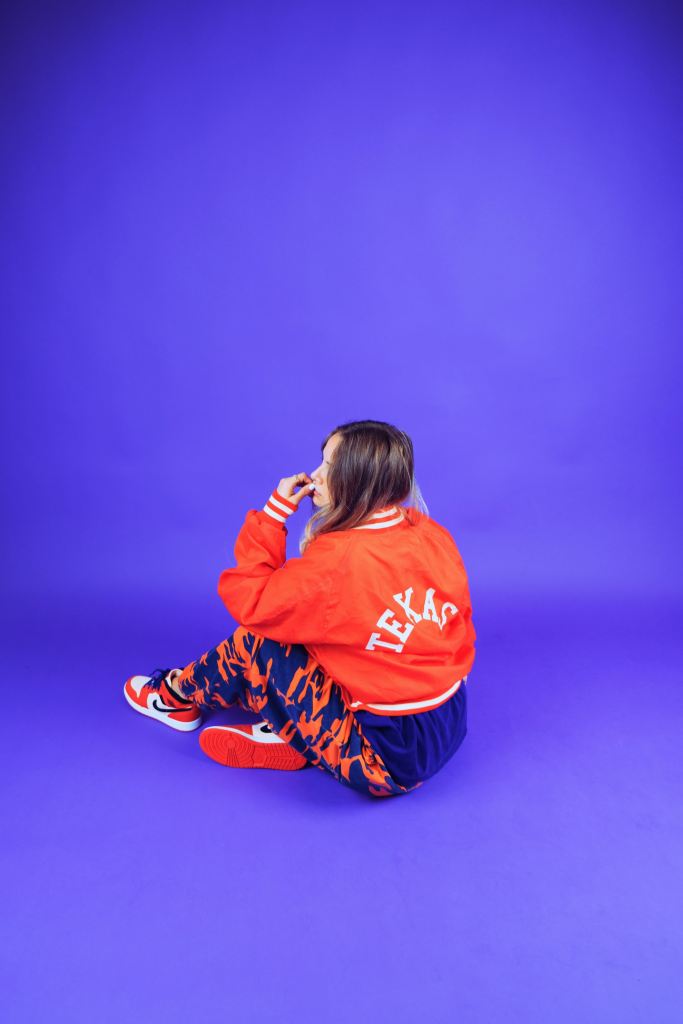
5. Vinted
Pros
One of the main advantages is that Vinted only charges a small fee of 5% on each transaction, which is lower than most other online marketplaces. Vinted also has a large user base, which means you have a great chance of finding a buyer for your items. It’s a user-friendly platform with an app that is easy to navigate, list your items, and communicate with buyers.Cons
With low fees comes a lot of competition, and you may need to lower your own prices to make a sale and compete with other sellers of similar products. Buyers also choose what shipping you use, which may be inconvenient for your business depending on cost and location. Vinted is also primarily popular in Europe, so if you are looking to sell to an international audience, you may need to choose a bigger marketplace like eBay or ASOS Marketplace. Vinted also offers limited customization for your shop, so if you want to create a unique brand or aesthetic, you may need to look elsewhere.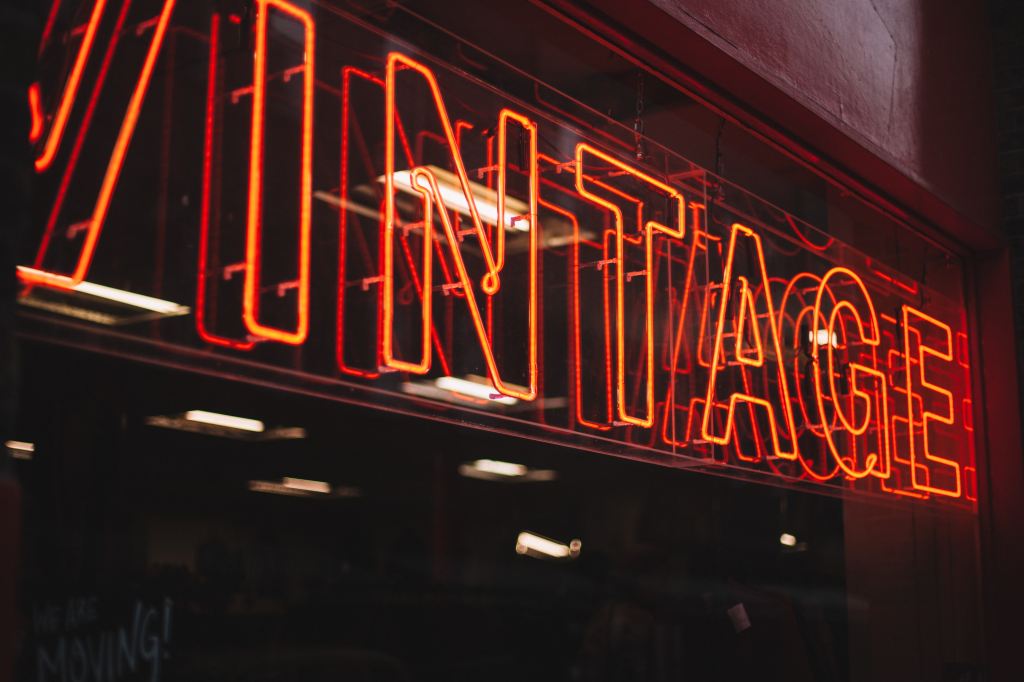
6. Mercari
Pros
Mercari also has a large user base, so you can potentially reach more buyers than on other platforms. The platform is user-friendly, making it simple to create listings and manage sales, and its flat 10% fee on all sales is lower than many other online marketplaces. Mercari provides prepaid shipping labels for sellers with up to $200 protection, simplifying the process and reducing stress. Their guarantee protects buyers from fraudulent sellers, which can help new businesses establish themselves as trustworthy online.Cons
As there are so many sellers on Mercari, there is a lot of competition, which makes it challenging to stand out. This is added to by the fact Mercari is only available in the US, so you are unable to reach buyers across the world. Mercari’s platform doesn’t allow for a lot of customization of listings, so you may feel limited in your ability to promote your brand and showcase items according to your personal style.
7. Personal Website
Pros
When you sell secondhand clothing on a personal website, you have complete control over the entire process, from pricing and product description to shipping and customer service. Selling on your website also eliminates the commission fee you would have to pay to third-party sellers, meaning you can earn more money per item sold. Your own website allows you to customize your online store according to your brand’s unique style and preferences. This is important for fashion businesses in particular, as you’ll want to draw in buyers with an aesthetically pleasing website. By selling on your own website, you can also build a loyal customer base and increase customer retention by offering discounts and exclusive promotions.Cons
Selling on a personal website may limit your exposure to potential customers compared to using a larger platform like eBay. You will need to invest in marketing your website to attract visitors and generate sales, as your search engine optimization will not be great in the early days. There are also many other hidden costs involved in setting up your own website, from the companies you use to host and design it to the payment interface you select. Paying commission to a popular and trusted platform may be your best bet when starting up a reselling business.
8. Instagram
Pros
Instagram has over one billion monthly active users, so you can easily reach a large audience for your secondhand clothing. Selling on Instagram is relatively easy and low-cost compared to other e-commerce platforms. Instagram also allows you to create a personalized storefront connected to your page, where you can showcase your products and provide further details about them. The direct messaging feature allows you to communicate with customers quickly, which can create better customer service and increased reputation. Influencer marketing is also a popular way to promote products on Instagram, which you can leverage by partnering with influencers in your niche to promote your clothing. Setting up a business account also provides you with invaluable business analytics. Read our blog to find out more on how to make the most of Instagram for your reselling business.Cons
Instagram does not have a built-in payment system, which means that you will need to rely on external payment systems, such as PayPal or Stripe. The store feature of Instagram is also relatively new, so some buyers may be hesitant to purchase clothing because of concerns about the authenticity of the product or the seller’s credibility. Remember that Instagram is primarily a social media platform, which means that it has limited e-commerce functionality compared to the dedicated marketplaces we have mentioned above. This can make it more difficult to manage inventory and track sales.
This list is not exhaustive, and there are plenty of other platforms out there that may work best for you. If you’re looking for something more specific or want to target particular audiences, think about The RealReal, thredUp and Whatnot. Alternatively, Facebook Marketplace could be an easy way to earn the funds you need in order to establish your business with third-party retailers. The options are limitless, and at Fleek we are here to help! Feel free to drop us a line and say hi at hello@joinfleek.com. -
How to Start Reselling Clothes Online: The Ultimate Guide
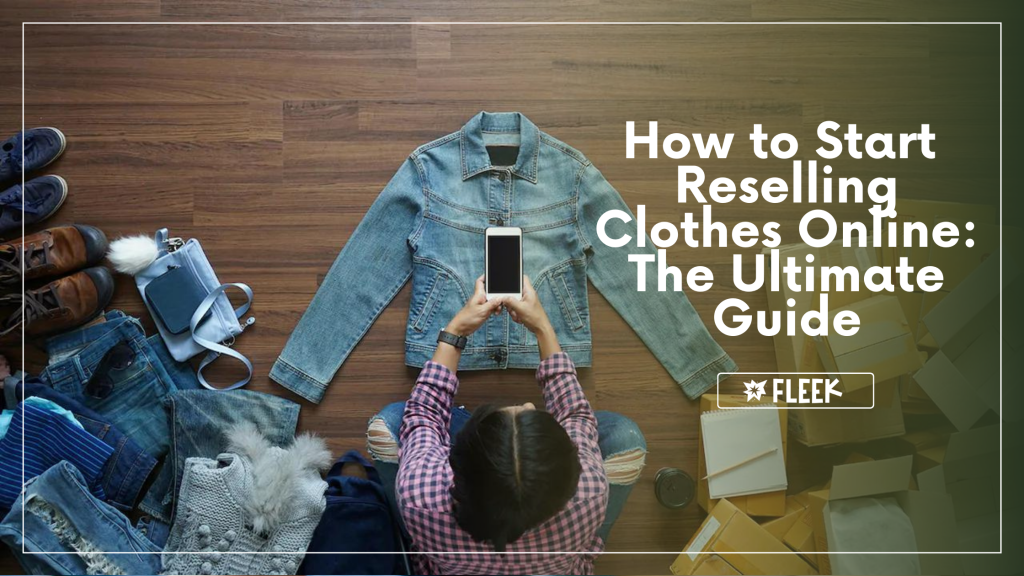
Do you have a passion for vintage and second-hand clothing? Do you have an eye for finding great picks? If the answer is ‘YES!’, selling vintage and second-hand clothing sounds made for you, and it’s never been a better time to start. Now more than ever, buyers want to be sustainable and stylish while shopping. Vintage and second-hand clothes meet both needs, but it can be hard for consumers to find those perfect picks. This is where you come in.
At Fleek, we are here to help you create a stylish and sustainable way to shop by selling vintage and second-hand clothing. With hundreds of vintage vendors using Fleek, we know what it takes to be successful selling second-hand clothes. Follow our 3 key steps for a stress-free guide to get started sourcing, merchandising, and selling. Read on to turn your passion into a booming business and find out how Fleek can help along the way.
1. Sourcing
You’ve got a passion for vintage and second-hand clothing and want to turn this into a business. Sounds great, but what next?
The first thing to do is find your niche. This will streamline your sourcing process, as well as help attract an audience. Find a style you’re interested in, as this will make it easier for you to spot those stand-out picks, but make sure your niche is viable – you’ll need to buy a lot and sell it too. 1980s apres-ski knitwear might be where your heart belongs, but how much stock will you be able to buy and sell quickly? On the other hand, make sure your angle isn’t too popular – you need to stand-out in this fast-growing market and doing the same as everyone else won’t show what you can offer. Follow the latest trends on both the runways and social media and combine this with your personal style to find an angle you and your buyers will love.
💡Pro Tip💡 Get inspired by browsing Fleek’s Instagram to see our latest drops and our blog posts to keep you on top of the trends.
Once you’ve found your angle, it’s time for what you really came for … shopping! Or, as we say in the business, sourcing. Start by browsing thrift stores and online retailers regularly to get to grips with the market, but think about using a marketplace like Fleek to make sourcing quality goods that much easier for your growing business. This will free up your time and make sure you’re getting the best for your buck. Wherever you shop, make sure you have a plan and inspect your garments – no one wants to get excited about a gorgeous vintage find to discover it’s damaged.
💡Pro Tip💡 If you haven’t found what you’re looking for scrolling through Fleek’s online store, contact us to arrange virtual handpicks with buyers for bespoke bundles that suit your seller needs. Download our app or contact us at hello@joinfleek.com to get going!
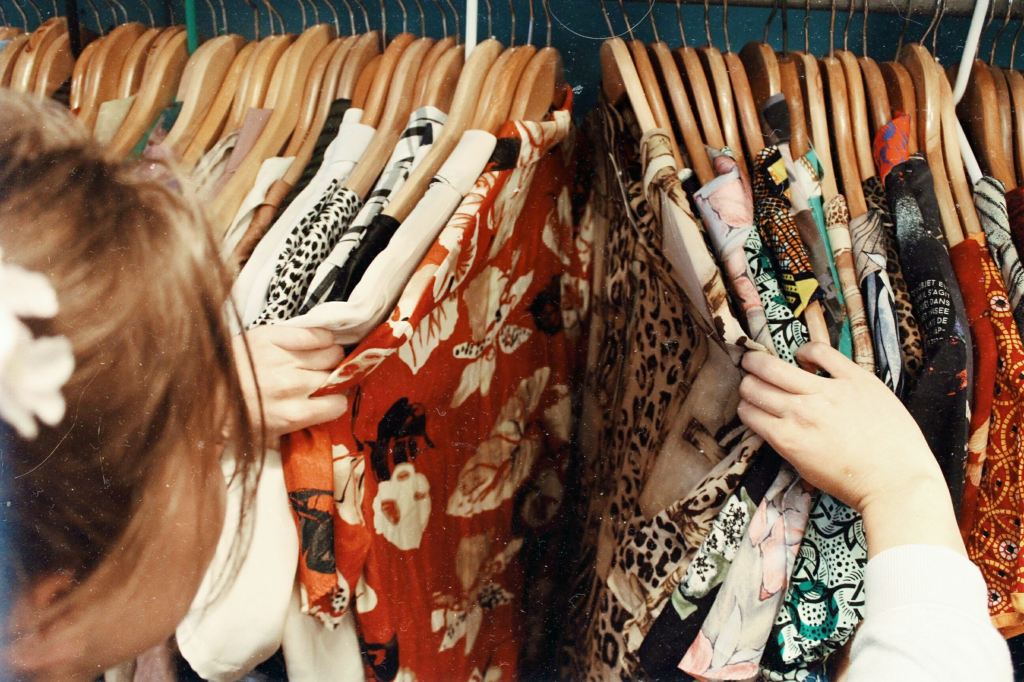
2. Merchandising
Once you’ve sourced your trendy vintage and second-hand clothing, you need to find a suitable way to merchandise them. A good system will make your life so much easier, so we’ll talk you through our top tips.
It’s important you find the right place for your vintage and second-hand clothing to keep them in mint condition. Store them in temperature and humidity controlled environments, away from pests. Remember they also need to be kept out of natural light – their colours may fade in the sun and this is the last thing you want for your precious finds!
You’ll also need to have your finds cleaned and repaired before you advertise and send them out to buyers. Always check the labels and follow instructions – vintage can be tricky, so guessing isn’t an option here! The good thing is that there are plenty of curators out there, so if your label is missing or you have any concerns, look online for info or the Vintage Fashion Guild’s label resource to search for brands. If your garment is truly one-of-a-kind, assess fabric condition and soil level to determine the best way forward. A quick steam can remove odors and creases, which saves you from ironing your fragile vintage finds. The Smithsonian has a great method for removing stains, but it’s always handy to have a good dry cleaner who has vintage experience on call too. The same goes with a tailor for those missing buttons and undone hems.
Keep organised by creating a good storage system. A popular method is by type, then colour. For example, keep all your sweaters together, then sort in colour-order. Maybe even group by era, if this is your vibe. However you choose to store your vintage and second-hand clothing, make it work for you. Keep your garments visible by hanging clothing on racks and storing accessories in clear boxes. Trust us – this will save a whole lot of time rummaging through piles of clothes for that tiny cami you’ve just sold!
💡Pro Tip💡 Be careful storing those stunning embroidered finds – beads can get caught and snag other items!
It’s now the perfect time to sell vintage and second-hand clothing, but you’ll need to know how to do it right to get those buyers refreshing your page for that next big drop.
The current market is visuals-driven, so follow suit selling your products. No matter how great a second-hand find may be, people won’t buy it unless it looks good in photos. Shoot your items immediately after they arrive and have been cleaned – there’s no time to spare in the second-hand clothing market. Use a consistent background to show buyers you are a pro with a reputable business. Always show the full garment, the label and any flaws your vintage find might inevitably have.
💡Pro Tip💡 Social media is your most important tool and buyers love to see candids mid-shoot. Sneak-peaks of your items will get buyers interested before they’re even released.
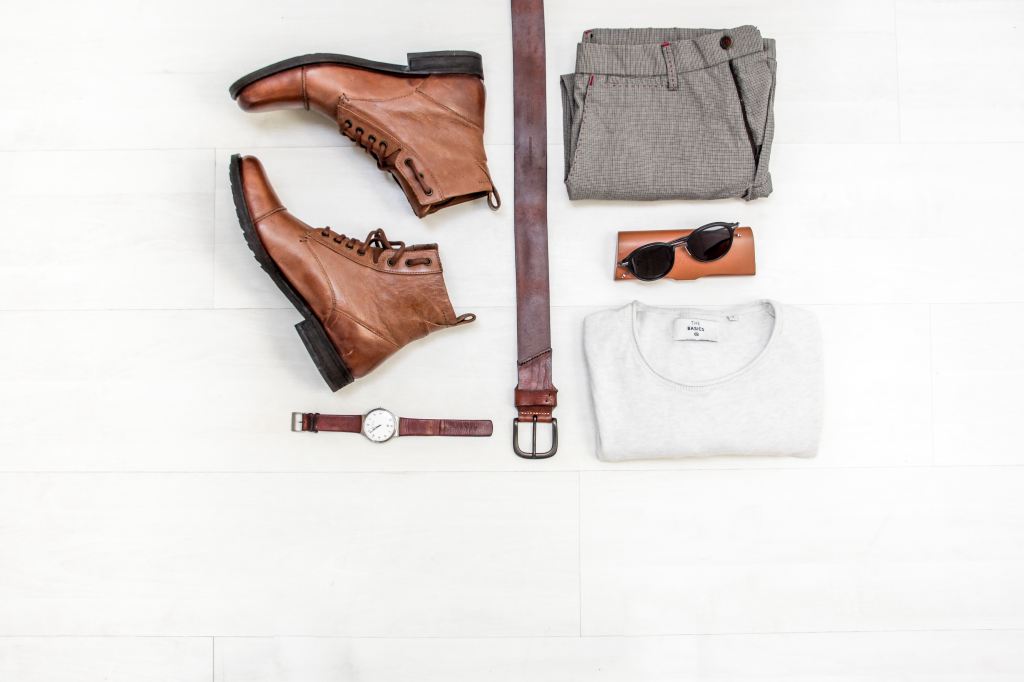
3. Selling
Setting up a store online can seem daunting, but there are plenty of places out there to get going, from global marketplaces to vintage websites. Wherever you set up your store, make sure the storefront works for you and your customers. Display items in collections for ease of browsing; this may include era, colour, occasion and item type. You’ll need to have a great product page copy (a description of your item) to set customer expectations and minimise returns if an item comes exactly as described online. Describe your garment in detail with its brand, size, condition, date and label. We know vintage labels can go missing, so remember to look online and include anything you find in your description. Your product page copy is super important for vintage where measurements and condition require a bit more info:
- Sizing is crucial and you’ll need to include as much info as possible so your buyers know what they’re purchasing. Include waist, hip and bust measurements in inches and centimeters as well as sleeve length and neck opening measurements.
- You’ll also want to create your own terms for the condition of items and use them consistently. It will help your buyers to have this info, along with your size charts, in the FAQs on your website.
💡Pro Tip💡Once you’ve got your store running, get in touch with us at Fleek to help you engage with hundreds of other wholesalers out there to buy the hottest garments in bulk.
Pricing can be tricky for vintage and second-hand clothing, as you’ll need to forget all the standard formulas. Factor in the cost and overheads as usual, but also consider rarity, age, demand and brand. Consult the market for accurate pricing first based on competitors – have a browse of Fleek to see what price bundles are going for elsewhere. If the item is really rare or couture, consider using an appraisal service to make sure you’re on the money – literally.
Finally, the marketing for your vintage and second-hand clothing business is make or break. Social media is your best friend, especially with clothing, as sharing and shopping online is quick and low-maintenance. Put that constant flow of fresh items on insta straight away to get snaps to buyers ASAP. Shout-outs from celebs or influencers is ideal, but you can generate your own buzz by asking customers to post photos of your items. A simple “make sure to tag us and we’ll post you!” provides user-generated content that people can trust, building your reputation along the way. Use social media to sell your products too – it is easy for buyers to see something special online and want to snap it up straight away!
Following these steps will get you on your way to your dream of selling vintage and second-hand clothing. Remember – know what you’re looking for and how to sell it! Great garments combined with excellent presentation and marketing is your key to success.
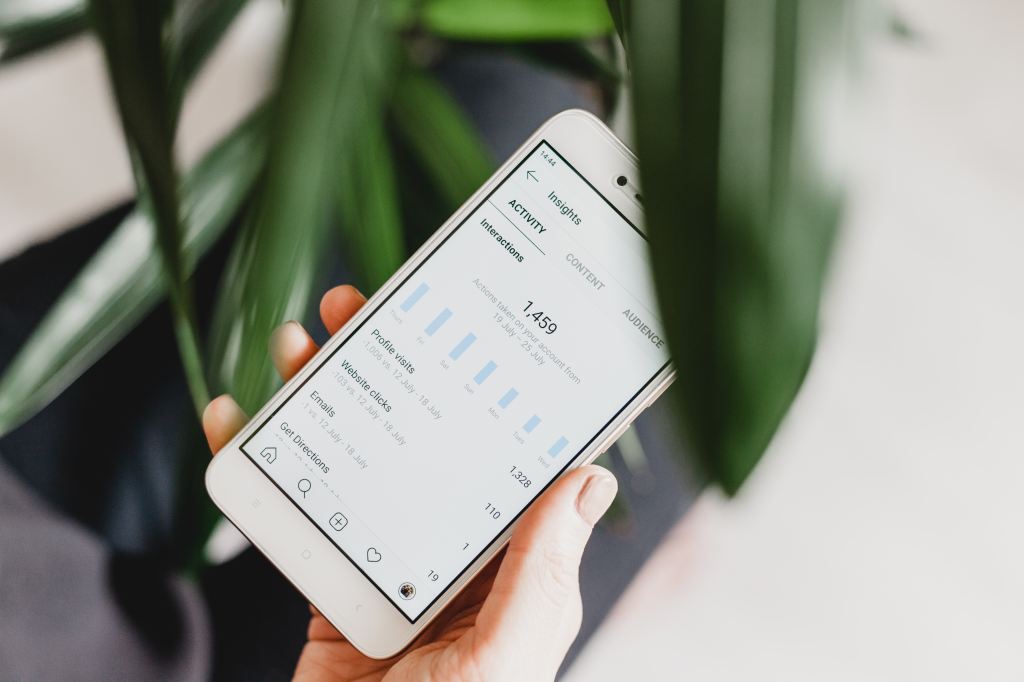
At Fleek, we are always here to help. Whether that’s virtual handpicks with verified sellers or shopping for stock with full buyer protection, we are a safe and trusted way to source your vintage and second-hand clothing venture. See How it works and take a look at our FAQs for more information. Just drop us a line and say hi – we check all our messages! hello@joinfleek.com
-
How to use Instagram for your reselling business

Are you looking to expand your online presence for your reselling business? Instagram is the perfect platform for you to showcase your unique vintage items and connect with potential customers. Social media is an invaluable tool for independent secondhand and vintage clothing retailers, and Instagram is one of the best options out there. Visuals-driven and used by millions, Instagram is the ideal place to share both your awesome clothing and personal story with a wide community of vintage-lovers and bring in customers to your store. Read on for some tips on how to use Instagram effectively for your reselling business and make the most of all it can offer you.
Create a visually appealing business profile
The first step to using Instagram for your shop is to create a visually appealing profile that maximizes Instagram’s tools for businesses. If you haven’t already set up an Instagram, choose a username that reflects your store’s name and niche, and use a clear and recognizable profile picture. Try to make this profile picture attractive, as this might be what brings customers in when spotting your name in follower lists or comment sections. Remember to use the same picture across any other social media platforms you have, so you’re instantly recognizable.
Your bio should include a brief description of your store and a call-to-action to visit your website or physical location. This might be through a link-in-bio tool like Linktree, which allows you to share all your links in one place. Instagram bios only allow 150 characters, so make sure you use them wisely: line-breaks and well-picked emojis can help make the info look clear and inviting.
Setting up your Instagram profile as a business account is essential to making the most of this platform. Instagram business accounts provide plenty of benefits to utilize as a store: you can view analytics info about who you’re reaching, run ads and even sell products directly from the app. It couldn’t be easier – all you have to do is go to Settings, then Account and Switch to a Professional Account. Select your category and continue as a Business account to follow the easy steps to access all this incredibly helpful info. Analytics will help you know when and what to post, which we’ll explain next.
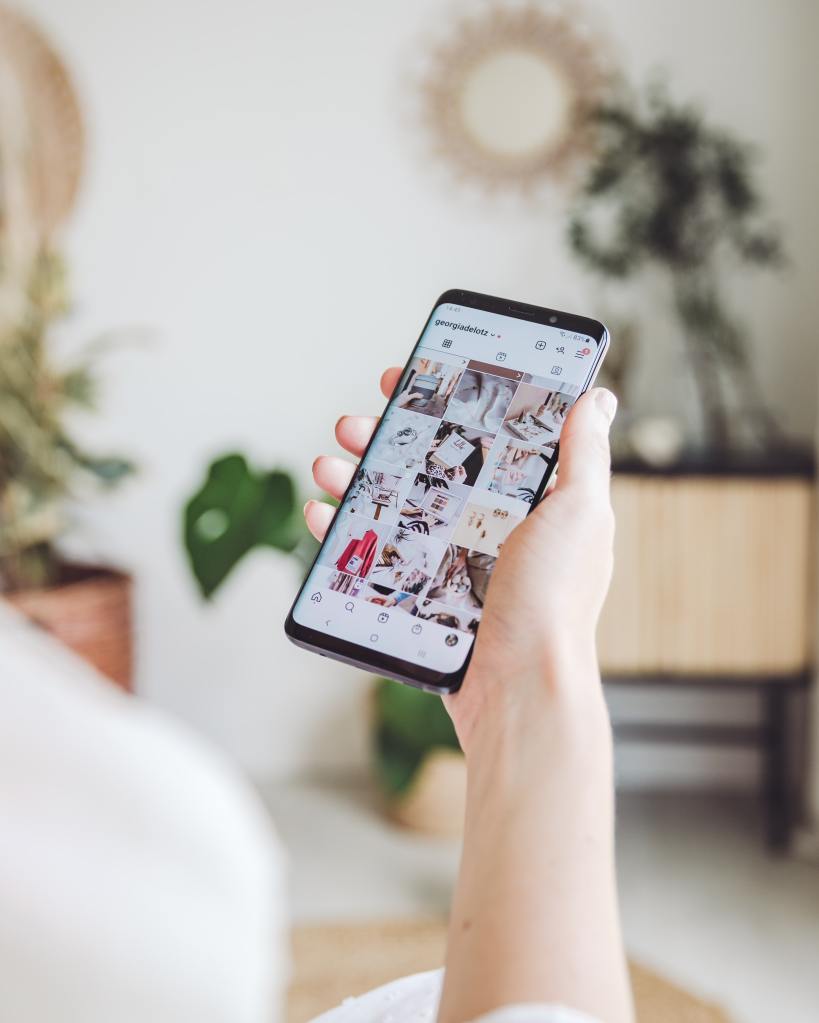
What to post
Now you’ve set up your Instagram Business Account, it’s important to get the content right. Your posts help to define your target audience, so make sure you consider what those potential buyers might like to see. Start off with info about your store in simple but attractive infographic style posts with a bit about your store, FAQs and what makes you you. If you have a physical location, tell people where you are and when you’re open. Looking at the pages of similar stores can be a good place to start for inspo.
Instagram is a visual platform, so make sure you take clear and well-lit photos of your best secondhand items to show them off as the gems they are. Use a high-quality camera or smartphone and experiment with different angles and lighting to showcase the unique features and details of each item. If you’re into funky set-ups, try designing your shoots so they show your style and attract the target audience you’re looking for. It’s a good idea to keep your photos consistent in style and theme, so your profile looks cohesive and professional. Whether this is HD photos with a plain white background or colorful scenic shoots that showcase your personal style, try and keep a consistent style that creates a recognizable brand.
Captions are super important tools to add extra info along with some flavor to your posts. Use keywords associated with your brand and product, along with well-chosen emojis to make longer captions easier to read and more visually appealing. Hashtags can be a great way to reach a wider audience interested in vintage and secondhand fashion. Research popular hashtags and include them in your posts to increase visibility, or experiment to see what works for you. You can also create your own branded hashtags to help build your brand and make it easier for customers to find your content. Avoid excessive hashtags though, as it looks clunky and can be unappealing, and always put them at the bottom of your caption.
If you have a physical store, geotag it or your city as the location. This will connect you with the community, and if people are looking for things to do in the area, they might just see your store pop up!
Posts aren’t the only form of content you can share on Instagram. While this will be what makes up your main feed, there are various other ways you can communicate with your followers and potential buyers. Stories, for example, are the perfect place to share quick info like reminders or behind-the-scenes snaps that keep buyers interested. You can then save these as a Highlight at the top of your page, so a few consecutive stories with key info about your shop can be saved in one easily-accessible FAQ highlight. Share new or important posts as stories, just in case followers have missed it on their timelines!
A newer feature to make the most of is Instagram Reels. These are short videos that let you get creative when showcasing your gorgeous products, without requiring a big budget for production costs. Reels are proven to increase reach and engagement, as the Instagram algorithm pushes their new products. Make the most of this feature while it’s hot and share a couple of reels a week to keep on top of the trend. While they require more effort than a quick post of story, you will reap the rewards when those likes and new followers roll in.
Use Instagram’s business analytics to see which posts, stories and reels are gaining the most traction to see what’s working best for you.

When to post
You want to make sure you’re posting regularly on Instagram to keep up the traction of your profile and let followers know you’re on trend and here to stay. We recommend at least once a day if possible, with even more stories to keep your presence up. Knowing when to post is where the Instagram Business Account feature really comes in handy. You can use business insights to see when your followers are most active and work out the best time to post and reach the most people from there. If this is later than you’d usually like to be active, don’t worry, you can use various third-party tools like Later and Sprout Social to schedule posts for when you want them to be seen without having to do it at exactly that time. You can even prepare a batch of posts to go out and schedule them at certain times to save you time going back and creating each individual post at different times.
Keep a calendar of important dates you want to share with your Instagram community like Black Friday or sale days, or theme your content around occasions like Independence Day or International Women’s Day. This will keep you relevant, and is also a good way to share with your followers what matters to you and your business more generally.

Engage with your audience and keep them interested
Once you’ve got your followers, it’s important not to lose them and keep them buying from your business. Reply to any messages and comments quickly to prove your reliability, and consider spreading your reach by commenting on your followers posts when appropriate. For example, if a buyer posts a great pic of them wearing some of your vintage pieces, comment how much you love their post! This is a great way of free marketing.
Keep people interested by hosting giveaways, raffles and competitions. Setting up a giveaway that requires users to follow you and share your post on their story to enter is a perfect way to broaden your reach, as they will be sharing your store with all of their followers too. People love free stuff, and it does you a favor too!
Show you’re keeping on top of the latest trends in fashion via your stories. If Rihanna steps out shopping wearing a sports jersey and running shorts, share with your followers similar items you have in stock. Make sure to keep your followers updated with any cool new things you’re doing or stocking too.
One of the main assets of Instagram and social media for businesses is the ability to work with influencers. Partnering with influencers who align with your brand can help increase your reach and drive traffic to your store. Look for influencers in your niche with a similar aesthetic and target audience, and reach out to them to see if they’re interested in collaborating. You can offer them a free item in exchange for a post or tag, or pay them for a sponsored post. Having an influential figure share your business with their fanbase can help drive new customers to your store and show you as a trendy and trusted business.
Consider going Live with your influencer ambassadors as an opportunity to share what your business is about and any upcoming events with their followers as well as yours. While there’s always the risk of something out of your control happening while broadcasting live, it can be worth it, especially if you’ve got something great you want to share or make that personal connection with your followers. Even something small like showing a new stock delivery as a sneak peak to those keen buyers before they’re posted to your website or put out on the rails in store can be a great form of interaction. Just make sure you’re prepared and have a plan for the stream, and all should run smoothly!

Instagram can be an extremely valuable tool for vintage store owners looking to expand their online presence. By creating a visually appealing profile, posting high-quality posts at the right time, engaging with your audience and collaborating with influencers, you can effectively use Instagram to promote your vintage store and connect with potential customers. Don’t forget that by using Fleek to sell your wholesale products, we can feature your store on our Instagram feed too. Make sure to follow us at @joinfleek for latest wholesale drops and the hottest trends, or check out our app, website and FAQs for more information on how we work.
-
7 places to source bulk vintage clothing for your reselling business

Shopping for vintage and secondhand clothing is one of the most fun parts of running a reselling business, but we all know it can be hard to find those quality pieces that will bring buyers in and have them return for more. Here at Fleek, we can help make that process easier. With hundreds of verified wholesalers at the tip of your fingers on our website and app, it couldn’t be easier to buy quality secondhand and vintage clothing in bulk. This blog will talk you through the wide range of options out there for sourcing your stock and how you can get the best supply for your business.
1. Goodwill
Pros: Everyone loves Goodwill. Spending hours browsing those endless bins of secondhand clothing is truly a vintage lover’s heaven…and a bargain hunter’s too. Goodwill stores are easy to find and easy to love: with cheap prices, convenient locations, and a wide variety of items, it’s no wonder that Goodwill is a popular place to source.
Cons: Everyone loves Goodwill. Stores are often crowded with people fighting over the best picks (literally). People are on the HUNT for those stand-out finds at a low cost and it can be extremely competitive. Plus, with so much variety and unpredictability of stock, it’s hard to find a lot of just what you’re looking for – such as a 20-piece bundle of vintage Levi’s 501s made in USA in all the sizes you want.
2. Estate Sales
Pros: Estate sales are a hidden gem. You never know what people have stuffed at the back of their closet or boxed up in the loft. Vintage grandad coats? Quality leather jackets? Estate sales have it all. Every vintage seller thrives off discovering that special rare piece, and estate sales are the perfect place to find them.
Cons: Estate sales are competitive for a different reason. They can be exclusive and invite-only affairs, they don’t happen all that often, and there isn’t always a ton being sold. After all, how many designer handbags can one person have? There will be plenty of secondhand sellers like you looking for those precious finds and you might miss out. While estate sales can be great for sourcing those rare vintage picks, you may want to find a more reliable source that won’t come down to just pure luck.
3. Local Thrift Stores
Pros: Heading to your local thrift store is another great way to buy cheap secondhand clothing and give back to the community at the same time. Smaller than Goodwill and less likely to get you caught in a battle of band-tees, local thrift stores can be an ideal place to find secondhand clothing for less.
Cons: Local thrift stores tend to be too small without much stock, and what they have isn’t always the best quality or most desired items. You may end up spending a lot of time for just a few pieces that won’t get you a great return on your investment.
4. Buy/Sell/Trade Stores
Pros: Buy/sell/trade stores have an enormous variety of stock, and someone else’s trash might just be your treasure. Some people might not recognise those timeless trends like you do. And while you’re at, you can trade-in your hard-to-sell inventory for cash and/or other items that are more suitable for your reselling business.
Cons: While buy/sell/trade stores have an incredible variety to choose from, it’s just as competitive, if not more, than anywhere else. Most importantly, it can be difficult to turn a profit from the secondhand finds at these stores as they mark up their prices once someone trades them in. Remember – they’re running a business too. Be smart with your funds and find an option that keeps costs down.
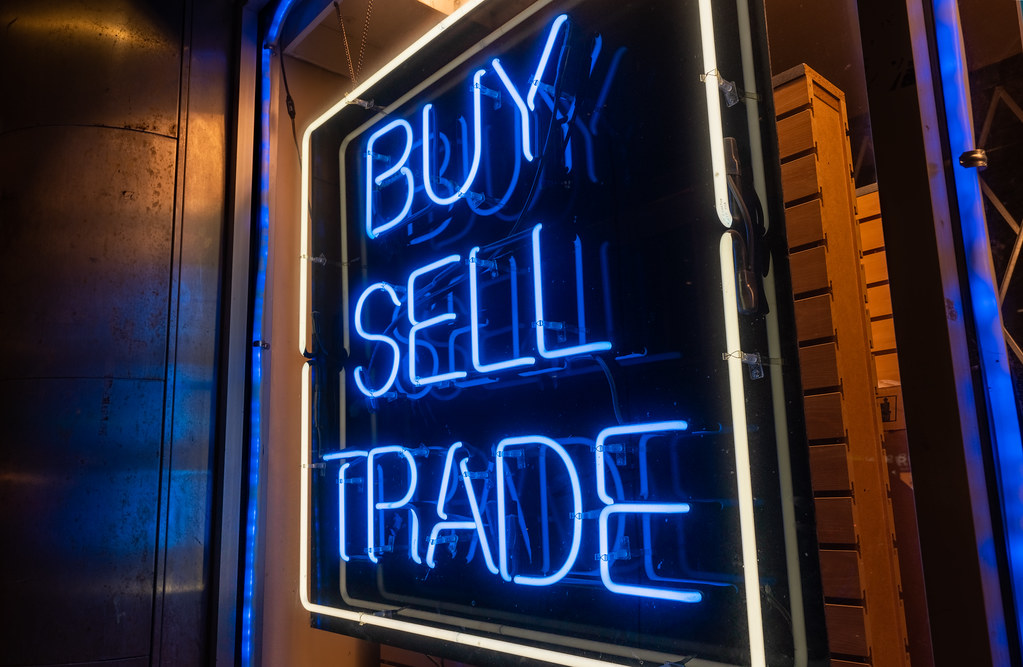
5. Friends & Family Closets
Pros: Possibly the easiest option of all – you might not even need to leave your house. We’re all guilty of hoarding clothes we don’t wear anymore…when’s the last time you saw your mom wear that 90s denim maxi skirt you used to love? Visit their house for a closet-raiding mission, you might even be doing them a favor!
Cons: Even though it’s tempting just to search your brother’s closet and call it a day, he still needs some clothes to wear. While convenient, this option doesn’t scale up and you will eventually run out of the good finds. This, however, is a great way to get your reselling business started, and you then can graduate to more scalable and reliable sources.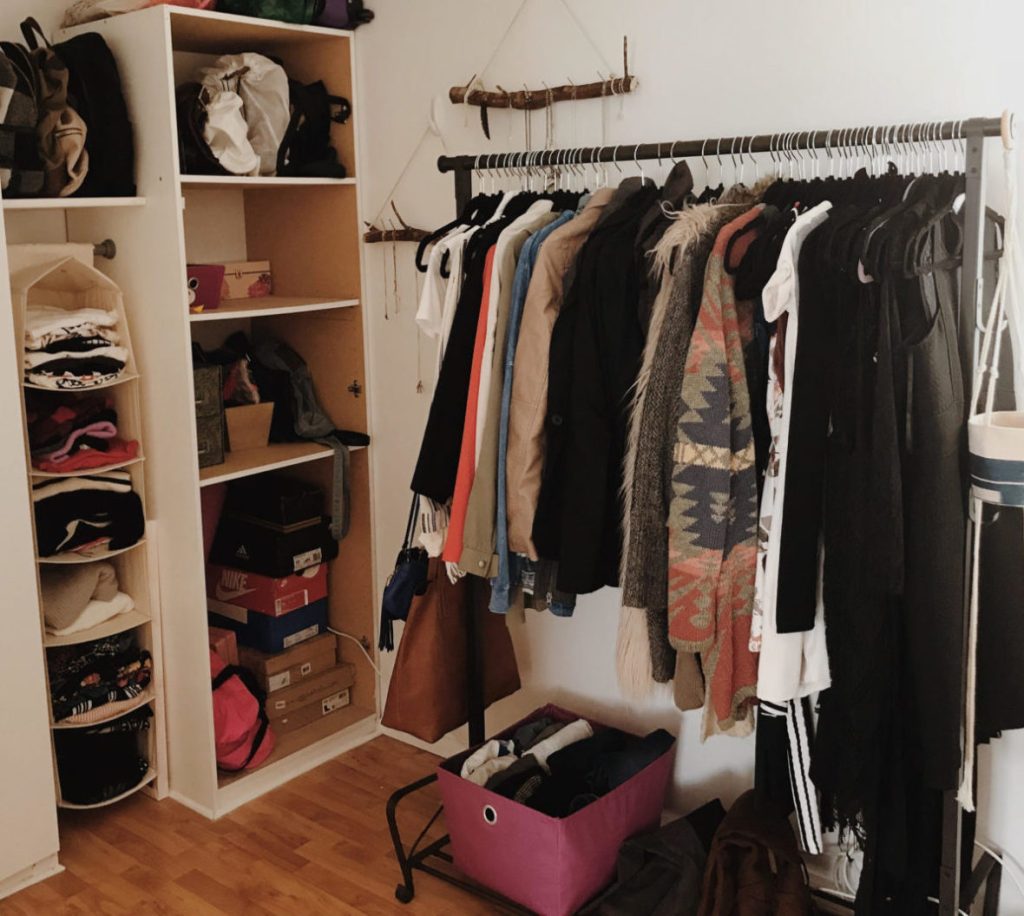
6. Online (Poshmark, Depop, eBay)
Pros: There’s not much you can’t find online these days, with hundreds of websites selling almost anything you can think of when it comes to vintage and secondhand clothing. It’s easy to stock your business without even having to leave your home, and it can be fun browsing the latest trends on these sites. There’s a whole world of secondhand clothing on the internet, you just have to take the time to look for it.
Cons: You can find good stuff online, but it’s rare you can buy great products in bulk. Besides, there are so many online stores it can be overwhelming. And just like buy/sell/trade stores, you’re buying from resellers, so expect a markup that will make it difficult for you to make that money back and even more when you resell. It’s expensive and time-consuming spending hours scrolling through those websites … if only there was just one perfect place you could buy stylish AND reliable secondhand clothing in bulk at a low price, all from the comfort of your couch…

7. Fleek
Pros: Fleek is a one-stop-shop for all your wholesale secondhand and vintage sourcing needs. With our convenient website and app, it couldn’t be easier to find what you’re looking for and buy in bulk from verified sellers. You also get peace of mind through Fleek’s buyer protection policy that protects you on every purchase. Forget spending hours sifting through stores or fighting over those sought-after picks – they’re all in one place at Fleek. Take away the hassle with our easy search bar, hot deals and virtual handpicks with verified sellers to find exactly what you need without even leaving the comfort of your home.
Cons: We can’t think of anything…check us out and come see for yourself!

Fleek is here to make sourcing wholesale vintage and secondhand clothing for your reselling business a breeze. Whether that’s virtual handpicks with verified sellers or shopping for trending stock in bulk with full buyer protection, we are a safe and trusted way to source your vintage and secondhand clothing business. See How it works and take a look at our FAQs to find out more. Or just drop us a line and say hi – we check all our messages! hello@joinfleek.com